#if people would just give actual advice and critique I think the entire art world would benefit
Explore tagged Tumblr posts
Text
I think people need to get more confident giving critiques because vague positive feedback is the most unhelpful thing I have ever been given
Every time I show my sister my art it’s like she wants to show that she’s paying attention, so she just dives into whatever I did right right ☹️
Like bitch!!! I know I’m doing it right!!! That’s why I did it!!! And I can’t as easily differentiate between what I’m actually doing right vs doing wrong!!! Because everything I do looks right to me already!!!
#this does not apply to the sensitive artists who can’t take objective criticism#I am not talking about those wimps#(they are wimps it is objectively wimpy shut up)#if people would just give actual advice and critique I think the entire art world would benefit#trying to be polite or nice is actually so fucking useless half the time
1 note
·
View note
Note
One thing that I've not been keen on in hindsight, is just how much what you call "pop writing advice" is not that helpful to me. Or how they get used by people in critique.
Because most of them tends to be exceptionally vague borderline nothing bits. Like a series having "good dialogue" or "bad dialogue", and unless it's the most incredibly obvious lowest common denominator kind of thing that anyone who listens could tell is bad dialogue, it's never properly elaborated on.
For example, they describe good dialogue as "witty, subtle, etc" or something else. Like okay, can you tell me what that even constitutes as? Any examples you want to provide? Is witty supposed to be two characters bantering with each other with MCU styled dialogue, or is it something else entirely? Is your definition of good dialogue supposed to just be empty snark that you jingle in front of people like keys while being devoid of any actual value? What is bad dialogue then; something you consider boring or you just not caring for that particular style of writing? Give me context dammit!
Like, maybe my mind just latches onto the weird things, but I'm always left with more questions than answers because of these kinds of advice and critiques, because there's never anything concrete to work with. Just a vague nothingburger that I'm expected to dissect without any clear context as to WHAT I'm supposed to get out of it.
mmmmhm. in general pop writing advice tends to approach stories as a product you intend to sell as widely as possible as opposed to, like, art, and when it's about dialogue or plot structure it often presumes a target audience of indifferently distractible readers/viewers who need to be spoonfed witticisms and action to get them to stick with a story. which is frankly insulting to readers and viewers as well as to writers.
anyway. i don't know if you were trying to fish for this but here's some actual advice, or at least how i think about some things:
dialogue -> what characters do not say is often just as important as what they do. if the character in question is lying or an unreliable narrator or otherwise untrustworthy, what they don't say is more important than what they do. it's almost always worth thinking about what a character might hold back in a conversation, and the things they might circumlocute around, and why. even scrupulously honest people can be forgetful, and nobody can say everything that's on their mind all the time.
dialogue -> is characterization. how a character speaks is one of the single most effective ways to make characters feel distinct from one another; if everyone sounds the same it's much harder for the reader to keep track of who is who. rhythm is everything. you can slow a character's speech down by using fewer contractions and using 'longer' syntax (not necessarily longer words, but longer sounds; 'moment' is a longer word than 'minute' because of the vowel sounds) and longer sentences; or speed it up with the reverse. no contractions at all can make a character sound stilted, overly formal, or very careful depending upon rhythm. try reading dialogue out loud to figure out the natural cadence of the words.
characterization -> i swear by this
plot -> is what happens when the circumstances of the world interact with character choices. 'deus ex machina' (and 'diablus ex machina') are not bad per se; the trick is to prepare the audience ahead of time by subtly establishing the possibility of such an intervention. the term deus ex machina derives from a convention of ancient greek theater, wherein divine intervention was a regular an unremarkable feature. to the audience of these plays, the sudden appearance of a god at the end of the story would not have felt abrupt or random because the gods were intricately intertwined with and present in day-to-day life.
thus, when translating this device into a story for modern audiences, it's important to develop a similar sense of immediacy and presence. deus/diablus ex machina is unexpected (so you don't foreshadow it) but should be explicable (so the audience already knows this kind of thing can happen) and ideally thematically cogent. i find that it's helpful to think of the world itself as a sort of 'character' participating in the plot in the same way the actual characters do.
theme -> think about theme the way visual artists think about color palette and cohesion. theme is what binds the story together into a unified whole. what purpose does a character's arc serve to the greater narrative? how does it rhyme with other parts of the story—or if it doesn't, is there a reason for breaking the pattern? do all the pieces fit together in a coherent way? you don't need to have an Idea or a Statement or a Concept necessarily, though it is helpful to be able to say in very broad terms what a story is "about" thematically, e.g. bitter snow is about liberation. because that gives you something concrete that you can use as a reference when thinking about what a character's arc is about and whether it fits or not.
30 notes
·
View notes
Note
Hi, sorry for this but you are a writer, so umm.. I was hoping you could give me some tips/advice on how to write?
tbh the way I got into writing is a bit insane, but I do have some advice that can help. gonna put it under a cut just because it got kinda long
honest to god, one of the best pieces of advice is something you're already doing because reading can genuinely help you with becoming a better writer. stepping outside of your usual genres or authors can help expand your viewpoint and introduce you to more narrative styles so you can play around and see what works for you. eg. if you mostly read first person, give second person a shot. or if you're an omniscient third person, try limited third person. or even retrospective first person, because i often see people complain about first person pov when it's married with a present tense story. if you have a first person narrator talking about events in the past as if talking to you, or a journal it often takes an entirely different angle and it's something I've played with in Homestuck fics because that fandom tends to be more open to narrative experimentation. Writing is honestly a lot of looking at stuff you like (much like art) and smooshing it all together. Personally, I've gotten a lot of my writing style from stuff like The Locked Tomb, admittedly Lovecraft was foundational (but this is a great example of why to always remain critical considering his bullshit), so was Homestuck and Rick Riordan's stuff. I'm never trying to copy them wholesale, but I am looking at aspects I like - such as Riordan's humor intertwining with the narrative and narration, or the deeply unreliable narrators that Muir writes, or even how Homestuck balances purple prose with gut wrenching conciseness when it counts. A lot of modern day fast food fiction takes out a lot of the stuff that actually builds a story - pacing, playing with narration and technical writing - so you need to be conscious of what you're looking for in things. Often more established authors get to do weirder stuff than new authors, but don't discredit new ones because that would be leaving out folks like Xiran Jay Zhao and their phenomenal prose.
Another thing that helps greatly is reading writing critique. Video essays on books or even more critical thought pieces on writing, tropes, etc. can help you learn more about why something works. Lots of different channels on YouTube dedicated to dissecting media, absolutely recommend stuff like Hello Future Me, Overly Sarcastic Productions (real world ties + mythology, great basis to build things on), Zoe Bee (writer + commentary), Nerdwriter1 (media analysis + commentary), Just Write, and Tale Foundry. For adjacent suggestions that can help build up alternate perspectives that aren't directly about writing but are about critical thinking with stories (which is frankly an important skill to have), I definitely recommend Princess Weekes, Accented Cinema, Now You See It, Dominic Noble, The Storyteller, and Pop Culture Detective. A lot of this is discussing film (save Dominic Noble, who also talks about books a Lot), but the core essence of storytelling is helpful regardless of what angle it comes in - be it video game, movie, tv, or book reviews and analyses.
Actual writing. Varies on the person on if they do outlines or not and how, but I still recommend trying to do an outline when you're first starting out. One habit to immediately knock yourself out of is writing things chronologically. If you're working on a big piece and have more energy to write something in the middle? Put that in a new doc and leave a placeholder for where you're at. Legitimately, getting words on the paper is more important than those words being good. Because you can always come back and edit things to make sense.
Always edit what you write. I hate the "no beta we die like real men" attitude because people will dunk on editing but then praise stories for having "firm and satisfying" connections which can only really be built through editing. Your first draft is your rough idea. Your second one is when you read through and have it make sense. Three is making that make sense, and maybe 4 is more just grammar and spelling errors. Edit as many times necessary to make sure you like it.
Always work in broad strokes, then move in finer like with anything. Do a general idea for a story, then your main story beats, then how you connect them together, and then the nitty gritty of each. Keep lots of notes - do not rely on your head solely for everything - and just also be willing to let things go if they change.
What I tend to do when I write is I want a good flow. I often get that from reading my writing out loud to hear how it sounds, but I'm looking for a good beat to read along. Because even if the sentence is grammatically correct and structurally sound, it may not be very interesting to read. Like you could say someone feigned a polite expression to not let the other person know that they didn't feel comfortable with a topic, or you could go the angle I went with recently of "she painted herself an interested expression to wear as dread began to gnaw at her gut." Sometimes the more colorful or out there the language is, the better it sounds when you read it. Like instead of saying "that's just how things go for them" you could say, "but Fate had a funny way of making her disdain known for (X character)". And this is where reading other peoples' work comes in real handy because you can get a lot of examples of how people write things.
I also try and reflect themes of the story into the writing itself, like this section of a draft:
Still nothing. Seemed he wasn’t going to bother with a glass, instead just ripping the top off of some bottle of gin and tipping it back with little regard for himself. Still that chronometer ticked on; still that taught tension like another arrow had been drawn. A million and more things flooded Ysayle’s mind, itching to loose them at Estinien, yet found herself stuck in indecision as she stared daggers into him - ever her opposite as he just seemed despondent. The gin bottle hit the extended shelf loudly; one hand a fist around the bottle, the other balled up on the surface - knuckles as white as bone. Still, Estinien said naught. Still, the chronometer ticked on. Still, Ysayle’s heart roared in her ears - poisonous words damming up her throat.
The theme of this story is avoiding the mistakes of the past. How things often can wind up cyclical, and the goal is to break from those cycles and repeats. So naturally, several points of the narration itself repeat itself. This isn't standard writing style, but it gets that point across by repeating "Still" as the scene crawls on. I also use a lot of alliteration in my writing because I personally find it fun? So "a maddening matter made most malign", for example.
It also helps to change up how you write or what descriptors you use based on the character whose head you're in, even if it's third person. Third person can have a voice and I often use it to speak aloud a character's thoughts instead of relying on italicized dialogue-thoughts. It makes the dialogue-thoughts appearing hit more when they do instead of just having to be subjected to internal ramblings constantly. Like in this fic I just published:
“...Can we talk about it on the morn?” “What for?” You don’t know what it is you ask of me. “Tired,” Estinien said with a shrug. “We’ve morning patrol, remember?”
Compared to this fic:
“Yes, confusingly.” Her tone was flat as she leaned once again on Surkukteni’s shoulder, thankfully on the uninjured side. “I fear I may have been wrong, though I truly doubt it. To deny me twice, then throw a fit? I wonder — why didn’t you go through with it?” Not even Surkukteni had that answer. For the umpteenth time during that conversation, she refused to look at Her Darkness. That desire — twisted and poisoned as it was — was one that still surfaced from time to time, yet like clockwork made her ill and was banished from her thoughts. Why was that? She felt scorned back then, wishing the universe would correct this error in sparing him but taking Ysayle — but was she not the one who helped save him? Who helped tear those eyes from his armor? She easily could — and had previously — bluffed that it was to destroy the eyes and be rid of the threat, but given her hesitancy now? Why?
All of Surkukteni's thoughts are condensed into the narration so that I can separate out her thought dialogue from idle musings since she - specifically - has a connection with something that can talk telepathically. This thing comments on the literal narration of the story, so when she's directly addressing this thing it's thought-dialogue. But her actual thoughts become narration to avoid spending too much time with that, as I find it's better used sparingly.
Motivation for writing is probably the hardest thing, and best I can advise is to get really into critiquing the stuff you like because you wind up finding a lot of material in fix-it stuff, or just wanting to see more of stuff like you. It's part of what drives my xiv stuff due to how they treat female characters, and I really just wanna see more sapphic bi4bi. So considering it's something I've been stuck in for a very long time now and really like the ambient lore and wish it would do better, it's fueling my desire to write. And from there, there are so many other angles to take - like building ocs, building lore. Finding a sandbox is genuinely one of the best ways to do it. Again, like. You'd be surprised at how much is there because of spite. LOTR has Eowyn because Tolkien didn't like that the "can be killed by no man" thing in Macbeth was resolved with a character born by c-section, so he instead wrote Eowyn, the woman who killed the Witch-King of Angmar. C.S. Lewis didn't like the fact that Tolkien believed that modern technology - or slightly less modern technology - didn't believe in fantasy and he explicitly cited lampposts. And this is why there's just a random light post in the middle of nowhere in the Narnia books.
Critique is good and healthy. I'm critical with the stuff I like and my own things so I can work on them and myself. It's fine to like something that you don't wholly agree with, especially if you're using it to inform how you build on it or build your own things. Like I dunno, I looked at Dante from Devil May Cry and went "what if he was trans" and now I've got Rhombi, a character who has stepped really far away from the OG Dante mould, but you can still see hints of it as I used what I wanted to see out of DMC to build this bisexual disaster of a guy. I was disappointed by Elsword not really committing to some of their character concepts, so I kinda just took Eve (and admittedly Add) and made them into Celes and Neilos and took them to their logical conclusions. All three of them were originally fantrolls at some point, so most of the heavy lifting was done when I was back in Homestuck and all I had to do was scrub the barcodes off of them to build them up in an original verse.
Chemistry is also crucial. If characters aren't vibing, move on. Do not force it. Good chemistry can save a bad story (eg. FFXV) and bad chemistry can ruin a good story. Often it's the characters that drive a story so you need to do a lot of plotting and planning. Most writing is honestly just planning before putting the words down.
And I'm very much so rambling by now but my main points are these (+ others I'm realizing while typing):
Plot a Lot and keep lots of notes, and also organize those notes. The contents don't have to be pretty, but you'll thank yourself in advance if you at least sort them by core idea
Getting words down is more important than getting them down correctly. You can always come back and edit it when you have an idea of how to make it work
You can always place a [insert scene here] tag so you can keep your flow and don't get caught on something.
You also don't have to write chronologically - you wanna write the big confession scene before the intro? do it! just jump right into it!
also don't be afraid to delete stuff or remove it from your draft. save things for later to see if they work elsewhere, because maybe it could be a better spinoff.
dont listen to the advice of "if it really matters, you'll remember it in the morning" that advice was given by neurotypicals who don't have memory issues. make notes of EVERYTHING and then delete the ones that don't work
sometimes writing by hand vs computer can really make a difference in how you think. handwriting is slower and makes you think about stuff, so you may want to keep journals for random snippets or ideas like how doodling is good for building up your habit of drawing
Outlines can help but how you outline is up to you. Try a few styles out and go with what works best.
I cannot stress enough that having something like a marker board to write out your broad stroke story ideas is really really nice
Broad strokes first, then narrow it further and further down. Don't get wrapped up in the nitty gritty details
Chemistry is crucial and can often save a piece you're not fully feeling.
Read your stuff out loud while editing because it can help point out stuff that's not jiving! I find it helps a lot with dialogue
Read a lot. Listen to critique. Be more critical. Also don't limit your idea of stories to just books - expand the media you consume and you'll find really interesting stories that can help with yours
Don't be afraid to use tropes, but also don't super rely on them to where you're just checking off boxes instead of coming up with natural scenarios built on chemistry (eg. having the nerdy goth girl is fine, but the way the trope ends in most media ("fixing" her or just having her be a quirky cynical critic) may not fit with your story and it may be better to see how the story plays out rather than forcing it into something it's not)
Iron Widow is a good example here: the relationship between Zetian and Yizhi is pre-established and comes off as sort of "boy next door" vibes, or at least the very dedicated childhood friend. It quickly becomes apparent that he's as much a co-conspirator in her plans as Shimin is. The guy can be ruthless when given the chance, and that's how Yizhi goes beyond the initial trope and defines himself outside of it. Same with the contextualization of Shimin's seeming "aggression" as the "bad boy" and figuring out where that problem/persona actually stems from, and then the shift of viewing it as less aggression and more retaliation and self preservation.
Find something you do really want to write about, like filling a void in a piece of media you like or doing a take on media that made you mad or disappointed. Jane Eyre is technically fanfiction because the author wanted to see more of Jane and didn't get that. The Divine Comedy is self insert fanfiction of Dante Alighieri as he does worldbuilding with Christian mythos regarding heaven and hell. The Riordan verse is his interest in mythology crossed with a desire to give his son a protag that was like him (specifically ADHD and dyslexic), which then became wanting to let kids see themselves in the different halfbloods in the series.
There's a lot of ways you can get started writing, but the best way is to just write goofy stuff for yourself. Get out stuff that may look bad at first, but you go back and read it and critique it. Just getting yourself into the habit of writing helps a lot, because again: it matters less about the quality, and more getting it on the page and actually having something. You can always fine-tune writing, after all.
My first FFXIV fic isn't actually even published. It was just me writing something rambly about my Warrior of Light when I was starting to figure her character out. It looks nothing like what I'm doing now in part because that fanfiction became a launching point for me to work on others. I've got a lot of drafts that will never see the light of day because these were proto-concepts that became the stuff I wound up publishing. It's fine to have drafts that remain drafts because you can take that as practice, and practice is good. Anything that you write has value because you can use it to let your technical writing skills mature.
Also, don't be afraid to look for help. There are beta services on tumblr (or at least used to be when I was a teenager), plenty of writing guides or places set up to ask questions, plenty of youtubers that give prompts for you to work with. The hardest part is always getting started. But once you get past the awkwardness of the start, everything just falls into place and gets easier the longer you go at it.
You definitely have the desire for it because I've seen your very deep love of literature through the Bi-Library, so you can definitely become a strong writer if you put your mind to it 🫶 Find something to fix or address, and that usually is what gets the ball rolling. Worldbuilding is fun and can lead to something, but you can't have a well built world without a story to explore it.
Characters drive story, story is how you explore themes and the world itself, and the world itself is built on your experiences and interests. Embrace the fact that this is coming from your lens and experiences, because no media is truly void of the author and its other creators. Embrace that fact and use it as an extension of yourself. But really, just write. Literally anything. Just get into the habit of writing, and it'll progress from there!
#original#asks#answered#bisexual-coala#writing tips#long post#this is very rambly but getting into writing isnt the most straightforward thing#a lot of the time it really is just finding something that clicks and not caring about what goes on the page for the first draft#ive been writing fanfiction for...over a decade now? + a lot of rp (also over a decade) and now some p serious original stuff#my fanfiction has also gotten way more involved than it used to be#genuinely i got started writing by keeping a lot of journals and writing every idea i had even if im now embarrassed by it#what matters is just getting into the habit first and then looking at your stuff more critically once the habit is formed#it's hard to build a habit if you're immediately critical#but it's hard to maintain a habit or hobby if you're not - especially if you feel you can build on something#if you do feel it you oughta pursue it and see where it takes you#perfectly fine to not be critical with hobbies but being Constructively critical is how you improve and mature#constructive is key here. because being down on your own writing or being self deprecating is how you lose a hobby#like let's say you don't like your dialogue#go read scripts or books of stuff you like the dialogue from. analyze why they work in contrast to why you feel like yours doesnt work#maybe someone else has a solution for why it feels off#sometimes it's just as simple as taking a step back and looking at it as a whole or even just sleeping on it and coming back w fresh eyes#always approach something you don't like about your work with the attitude of ''how can i improve so i do like it''#like ''i need to be better at fight scenes. ill be sure to include more in my next piece to focus on it and maybe read some action books''#lotta ways to do it!! theres no one right way just a way that fits best for you!!!#just absolutely ignore the ''if it's a good idea you'll remember it in the morning'' stuff.#it doesn't account for people w memory issues and will screw you over#you do not have to wait until you're good at writing to start working on something. you need something to work on to improve#you can always come back to an idea as many times as you need as you grow as a writer#so just write until you build a habit and base style then analyze and move from there#fanfic is honestly really good for practicing style and technique - the characters and world are already ther so why not use em?
8 notes
·
View notes
Note
Hi, angel! Hope you're doing alright 💓 (hola ángel! También hablo español :) ) I was wondering if you could give some advices in starting out in an arts career?
Hola amigx, ¡perdón que nunca vi tu mensajito! I’m not on my Tumblr very often and definitely forget to check my messages. Luckily my favorite causita @luthienne told me you’d messaged me!
I don’t know what arts discipline you’re in, so feel free to let me know if the advice I have doesn’t apply to you (and ignore it!). There are so many ways to build an arts career, but I’m happy to share some things I’ve learned through trial and error along the way.
(Outrageously long post below break!)
Educate yourself in arts technique, but also study widely.
Techniques are important in art, but only as important as the concepts behind them. When I was younger, I wowed people by drawing near-photographic portraits, but that technical talent and skill alone couldn’t make me a professional artist. Memorable artwork has not just a how, but a why. It isn’t just the object but the story behind the object, and the meaning of the object in the world. Art is about what interests you, what makes you think, what you most value and want to change in this world. So as you build an arts career, learn the techniques behind drawing, woodworking, casting, writing, music-making, whatever your discipline is, but take time, if you can, to also study history, sociology, anthropology, ecology, linguistics, politics, or whatever else you’re drawn to conceptually. Study as widely as you can.
The studio art program I went through (a public university in the US) was very technique-forward; we signed up for classes according to technique, like printmaking or small metals, learned those techniques, completed technique-based assignments. Then I did a one-term exchange at arts university in the UK that was very concept-forward. We had no technical courses, just exhibition deadlines, and what mattered in critique was the concept. Both of these schools had their strengths and flaws, but what I learned was that, to be a practicing artist, I needed both technique and concepts that I genuinely cared about and could stand behind. If I could go back and change anything, I would probably take fewer studio courses (after graduating, I couldn’t afford access to a wood shop, metal shop, or expensive casting materials, and lost many of those skills) and more courses in sociology, Latin American studies, linguistics, ecology, anthropology, etc., because my artwork today centers on social justice, racial justice, Latinx stories and histories, educational access and justice, the politics of language, and community ethics.
And please know that whenever I talk about seeking an education, I’m not talking solely about institutional spaces. College career tracks in the arts (BFA, MFA, etc., much less high-cost conservatory programs) are not accessible to everyone and aren’t the only way to establish an arts career. You can study technique and learn about the world using any educational space accessible to you: nonprofits that offer programming in your community, online resources, Continuing Education programs. And of course, self-education: read as much as you possibly can!
Know the value of your story.
I come from a Cuban/Peruvian family and grew up in Albuquerque, New Mexico, USA. My father’s family fled political violence surrounding the Cuban Revolution and came to the U.S. when he was a teenager. My mother was born in Brooklyn to Peruvian parents on work visas and moved back to Lima in her childhood. I grew up with these two cultures present and deeply embedded in our household, in our language, our food, our sense of humor, our sense of history. And yet, some residual assimilation trauma still affected me. I drifted towards the most American things, the whitest things, English authors and Irish music, in part because I enjoyed them but also because those were the things I saw valued in society. I wanted to fit in, wanted to be unique but not different, wanted to prove that I could navigate all spaces. The reality of marginalized identities in America is that our country tells us our identities are only valuable when they can be seen as exotic, while still kept inferior to the dominant, white American narrative (note that this “us” is a general statement, not meant to make assumptions about how you identify or what country you live in).
But as an artist, all I have is my story, and who I am. I wasn’t willing to look at it directly. For years, I avoided doing so. It turns out, though, that I couldn’t actually begin my career until I reckoned with myself and learned to value everything about myself. To fully acknowledge my story, my history, my cultural reality, my sense of language, and my privileges. So I encourage young artists to look always inward, to ask questions about themselves, their families, and what made them who they are.
The reason for doing this is to understand the source from which you make art. Sometimes, however, for marginalized artists, the world warps this introspection into a trap, pigeonholing us into making art only “about” our identities, because that work is capital-I-Important to white audiences who want to tokenize our traumas. This is the white lens, and if anything, I try to understand myself as deeply as I can so that I can make art consciously for my community, not for that assumed white audience.
Know that your career doesn’t have to look like anyone else’s, or like anything you’ve envisioned up to this point.
As a high schooler I imagined that a life in the arts meant me in a studio, drawing and making, selling my work, getting exhibitions near and far, and gaining recognition. It was a solitary vision, one with a long history in the arts, rooted in the idea of individual genius. My career ended up completely different. Today, my arts projects involve teaching, collaborating, collecting interviews and oral histories, and creating public installations, rarely in traditional galleries or museums.
As you work towards an arts career, figure out what does and doesn’t work for you: the kind of art you like and don’t like, the kinds of spaces that feel comfortable and those that don’t. I always thought I wanted to be part of traditional galleries, so I got a job working in a high-end art gallery in Boston during my grad program. Once in that space, however— even though I found the space calming and the work beautiful— I realized that there was something that I deeply disliked about the commodified art world. I didn’t like that we were selling art for over $10,000, that our exhibitions were geared exclusively towards collectors and wealthy art-buyers. The work was often technically masterful, but didn’t move or connect with me on a deeper level, and I realized that was because it wasn’t creating any change in the world. I liked work that shifted the needle, that made the world more inclusive and equitable, that centered marginalized stories (that gallery represented 90% white artists). I liked artwork that people made together, which drew me to collaborative art. I liked artwork that was accessible to everyone, not just the wealthy, which drew me to public art. I liked art exhibited in non-institutional spaces, which led me to community spaces. Since I was in an MFA for Creative Writing, I liked interdisciplinary art that engaged performance, technology, text, that was participatory and not just a 2D or 3D object. Figuring out all of these things led me to apply to my first major arts job: as a teaching artist in a community nonprofit that made art for social change in collaboration with local youth, in a predominantly Latinx neighborhood.
My career path didn’t look like anything I expected, but I love it. The bulk of my income comes from teaching creative writing and art classes for nonprofits, working as a core member of a public arts nonprofit, and freelance consulting for book manuscripts. I love being an educator and consider it part of my creative practice. I love that I’m constantly collaborating with and talking to other artists. I love working with books and public art every day. I publish poetry, fiction, and literary translations, and exhibit artwork I’ve created in the studio and through funded opportunities.
Fellow artists tell me often that I’m lucky, that my “day jobs” are all within the arts. But there are downsides to the way I’ve chosen to structure my career. I’m constantly balancing many projects, and my income is unstable. It’s difficult to save and plan towards the future,. I get by, but financial instability isn’t an option for many artists with families and dependents, with debts, medical expenses, and just isn’t the preferred lifestyle for a lot of people. I know artists who worked office jobs for years to support their practice and gain financial stability. I know artists who had entire careers as lawyers or accountants before becoming artists full time. I know artists who teach in public schools or work as substitute teachers. I know artists who are business owners and artists who work in policy and politics. I know artists who work in framing stores and shipping warehouses while being represented by galleries. These are all arts careers, and I admire every one of them. So as you build your career, don’t feel like it has to look like anyone’s else’s, like there’s anything you “should” be doing. Focus on the kind of artwork you want to make and what kind of work-life balance is best for you, then structure your career around that as best you can.
Any job you use to support yourself can connect to an arts career!
I get asked often by young people looking for jobs what kinds of jobs will best propel them towards an arts career. I believe that any kind of job can connect to and support an arts career, and I know that some suggestions out there in the arts world (like “get an unpaid internship at an art gallery!” or “become a studio apprentice to a well-known artist!”) assume a certain amount of privilege. So I want to break down how different kinds of jobs can connect to your art career:
1) Jobs that allow for the flexibility and mental capacity to create. My friends who work restaurant jobs while going to auditions fall into this category. Who work as bartenders in evening so that they can be in the studio by day. Who dog-walk or babysit or nanny because the timing and flexibility allows for arts opportunities. My friends who are Lyft drivers or work in deliveries. These are often jobs outside of a creative field, but they can be beneficial because they don’t drain your creative batteries, so to speak. You still have your creative brain fully charged, and some jobs (like dog-walking) even allow for good mental processing (you can think through creative problems). As long as the job doesn’t drain you to the point where you have no energy at all, these kinds of jobs can be great because they allow time and space for your creative work.
2) Jobs that place you in arts spaces, arts adjacent spaces, or spaces where you can learn about material/technique. My sculptor friends who work in hardware stores, quarries, foundries, or in construction. My printmaker friend who interned with graphic designers. My writer friends who work in bookstores and libraries, artists who work in art supply stores. My friend who worked with her dad’s painting company and got to improve her precision as a painter, which she then took back to the canvas. My teen students who get paid to work on murals or get stipend payments for making art at the nonprofit I work for. My filmmaker friends who worked on film crews. Friends who worked as theater ushers, in ticket sales, or as janitorial staff at museums. All of these jobs kept these artists adjacent to their artwork, whether through access to tools, materials, supplies, or books, through networking and conversations with other artists, or through skillsets that could enhance their art.
3) Jobs that deeply engage another interest of yours, that bring you joy or can influence your work in other ways. If there’s a job that has nothing to do with your art but that you would love, do it! First, because I believe that the things we’re passionate about get integrated into our art, and second, because any job that gives you peace of mind and joy creates a positive base from which you can create. My friend who worked at a stable because she got to be around horses. My friends who worked at gyms or coaching sports because it kept them active. My friend who worked in a bike repair shop because he was obsessed with biking. An artist I knew who worked at the children’s science museum because she loved being around kids and planetariums. An artist who worked at a mineral store because rocks made her happy. If you have the opportunity, work doing things you like without worrying about whether it directly feeds your arts career.
Because believe it or not, all jobs you work can intersect in some way with your art. You’re creative— you find those connections! A Nobel-Prize winning poet helped his dad on the potato farm and wrote his best-known poem about it. Successful novelists have written about their time working in hair salons and convenience stores. A great printmaker I know who worked in a flower shop began weaving botanical forms and plant knowledge into her designs. The key in an arts career is to see all your experiences as valuable, to find ways that they can influence your art, and to be constantly thinking about and observing the world around you.
As for me, I worked as a tennis instructor, a tennis court site supervisor, an academic advisor, an art gallery intern, and a coffee shop barista before and during my work in the arts!
Let go of objective measures of what it means to be good.
I was always an academic overachiever. Top of my class, merit scholarships, science fair awards, AP credit overload, the whole thing. On the one hand, I grew up in a house where education was valued and celebrated, and my parents emphasized the importance of doing my best in school— not getting good grades, but working hard, doing my personal best, and reading and learning all I could. I loved school. I loved academics. And I’m not saying this to brag, but to lay the groundwork for something I struggled with in the arts.
It is jarring to be an academic overachiever and enter an arts career. I thrived off of objective value systems: study, work hard, get an A. If I worked hard and learned what I was supposed to learn, I earned recognition, validation, and opportunity.
And then I entered the arts. The arts are entirely subjective. We hear it over and over— great artists get rejected hundreds of times, certain art forms require cutthroat competition, etc. —but it’s hard to understand the subjectivity of the art world (and the entrenched discrimination and commercial interests that affect who gets opportunities and who doesn’t) until you’re trying to live as an artist. That you can work hard on something, give all of your time and physical effort and mental and emotional energy to it, only to have it rejected. That what you think is good isn’t what another person thinks is good. That there is a magical alchemy in the act of creation that can’t be taught, or learned, but must be felt, and that you can be working to find that light while actively others try to extinguish it. That you can be good and work hard, yet still not get chosen for the awards, the exhibitions, the publications. If you chased being “the best” your whole life, you’re now in a world where there is no “best”, where greatness is subjective, where the idea of competitive greatness is actually detrimental to artists supporting each other, and where work that sells or connects to white, cishetero traditions is still the most valued.
After struggling with this for a long time, I came to the conclusion that the most important thing to me now is making the art I want to make, the art only I can make, whether or not it fits what arts industries are looking for or what’s going to win awards. If I make art I believe in from a healthy mental and emotional place, doors will open, even if they aren’t the doors I expected. So try to let go of any sense that worth comes from external validation. Learn to accept critical feedback when it is given kindly, thoughtfully, and constructively. Surround yourself with friends and artists who who can talk to about your work, who build up your work and help you think through it rather than cutting you down. Don’t believe anyone in the arts world who thinks they get to be the arbiters of what’s “good” and who has “what it takes”. People have probably said things like that to the artists you most admire, and if they’d listened, you wouldn’t have experienced art that changed your life.
Work to gain skills in basic business, marketing, and finances for artists.
Many artists (at least where I am in the U.S.) go through an entire arts education without receiving resources or training in the financial side of the arts world. Your arts career will likely involve some degree of self-promotion and marketing, creating project budgets and grant proposals, artist statements and bios, sorting out taxes, and other economic elements. I can’t speak to other countries, but for artists in the U.S., taxes can be extremely complex. If you’re awarded a stipend, grant, fellowship, or employed for gigs or one-time projects, you’ll likely be taxed as an independent contractor and have to deduct your own taxes. Through residencies and exhibitions, you may pull income in multiple states and countries, which can also affect taxation. If you’re an artist who doesn’t have access to resources about finance and taxation in your arts program or who doesn’t independently have expertise in those fields, I recommend finding ways to educate yourself early: online resources, low cost courses, or even just taking your financially-savvy friends out for a coffee!
ANYWAY SORRY FOR THE LONG POST I HOPE SOMETHING IN THIS DIATRIBE WAS HELPFUL I HOPE THERE WEREN’T TOO MANY TYPOS AND I hope you have the most wonderful, fulfilling arts career! <3
#resources#writing life#arts life#arts career#visual art#studio art program#mfa#bfa#arts education#i have no chill when you ask me questions like this#long post
27 notes
·
View notes
Video
youtube
This week on Great Albums, I finally explain the deal with that record you’ve seen in the background of these videos, with those dudes working in the office. These dudes used to be in the Human League! Oh, and they really hate fascism. Full transcript of the video after the break.
Welcome to Passionate Reply, and welcome to Great Albums! Today, I’ll be looking at the debut album of Heaven 17: 1981’s Penthouse & Pavement. While you may not be familiar with Heaven 17, chances are pretty good that if you know your Western pop, you’ve heard of the Human League! Before forming Heaven 17, Ian Craig Marsh and Martyn Ware were members of the Human League--and they were also the band’s creative core. But they had a very different artistic vision, and one that doesn’t exactly prefigure the success of hits like “Don’t You Want Me.”
Music: “Being Boiled”
Between its plodding electronics and inscrutable lyricism, “Being Boiled” is pretty far from a pop hit. When Marsh and Ware left the Human League, they were keen to continue pursuing this sort of underground, experimental, quasi-industrial direction. Initially, the two of them formed the British Electronic Foundation, or “B.E.F.” It was chiefly a production company that worked with other artists, though they also released some instrumental music under this name. With the recruitment of vocalist Glenn Gregory, who Marsh and Ware had initially intended to front the Human League in the first place, they were set to get right back into the groove of what they had been up to before.
Music: “Fascist Groove Thang”
“Fascist Groove Thang” is the opening track of Penthouse & Pavement, and was one of its chief singles. While it’s much less ambiguous than “Being Boiled,” and much easier to dance to, it’s still got a lot of that subversive, underground charm--enough to get banned by the BBC, anyway. I know they always say that history rhymes, but it’s one of those songs from this era that really feels like it belongs more in our time than the one it came from. I like to think that its unforgettable chorus sounds more like a chant you might hear at a protest march, as opposed to something that belongs in a proper song. “Fascist Groove Thang” is actually based on an instrumental track by BEF, which was simply called “Groove Thang” before being reworked into this political anthem. Both versions are indeed pretty groovy, thanks in large part to the bass guitar work of session musician John Wilson. Compared to their work with the Human League, Penthouse & Pavement has an overall richer sonic palate, with more of those traditional instruments, as well as backing vocals. You’ll hear a lot of those on the album’s title track:
Music: “Penthouse & Pavement”
Penthouse & Pavement’s title track is the longest track on the album, clocking in at over six minutes. Between that, the lush instrumentation, and the honour of being the title track, it certainly feels like an anti-capitalist epic, dramatizing and dignifying the inner thoughts of a common wage-slave. The first side of the album, dubbed the “Pavement Side,” is where you’ll find both of these tracks, and it seems to deal chiefly with working-class struggles, as well as having a bigger emphasis on that bass-heavy groove, musically. Naturally, then, the flip is the “Penthouse Side,” it’s more melodic, and it seems to focus more on the lives of the rich and famous...though it isn’t quite that straightforward.
Music: “We’re Going To Live For a Very Long Time”
“We’re Going To Live For a Very Long Time” is perhaps the clearest expression of the idea of the upper classes living in their own protected bubble, shielded from plebeian woes. There’s a religious dimension to it, in that the narrator manages to live without worries because of their assuredness that Heaven awaits them when they die...but, as the title reminds us, they’re also confident that Earth will be good to them, as well. In case you were worried this message might not be ironic, the song actually stops abruptly in the middle of its final refrain, providing a sudden end for that narrator--as well as closing out the entire LP with a bang, since this is the final track! The idea of the wealthy actively taunting those beneath them is also central to the most rhythmic track of the Penthouse Side, “The Height of the Fighting.”
Music: “The Height of the Fighting”
In “The Height of the Fighting,” that march-like chanting takes center stage again, but it feels very different here. Rather than embodying a sort of grassroots resistance to the consolidation of power, “The Height of the Fighting” seems to be the voice of authority and power coming downwards, fitting the theme of the Penthouse Side. The song’s assertions, like “if you can’t take it, fake it” and “they sent you to it, do it” could be interpreted as pithy, meaningless sayings--perhaps throwaway lyrics, taking up space on a single aimed squarely at the dance floor. However, if you know the context of the Penthouse Side, it’s hard not to see them as representations of the worthless advice the rich often give the poor. Get a job. Get a side hustle. Work harder. Eat out less. And so on. Much like the implicit messages about class in popular culture, “The Height of the Fighting” might seem disposable, but the thrust of what it’s saying is actually deeply warped. Another complex, and perhaps conflicted, track on the Penthouse Side is “Let’s All Make a Bomb”:
Music: “Let’s All Make a Bomb”
Songs against nuclear war were commonplace in Cold War-era music, but “Let’s All Make a Bomb” isn’t quite a typical example. At first, its slow pace and despondent melody make us think we’re getting the usual fare. But the return of that swelling, chant-like refrain style, as well as a closer inspection of the lyrics, reveal otherwise. As the title might imply, “Let’s All Make a Bomb” asks us what kind of character is actually crazy enough to *want* nuclear war, and the character Heaven 17 have chosen is a hedonistic libertine, who sees the end of the world as one big party. The atomic bomb is not a thing to be feared, but “a brand new toy, to idolize.” As dark as that is, the fact that it’s also part of the Penthouse Side, and ostensibly a representation of what those who hold influence and power believe, adds a whole new level of horror to it.
While I love album art, and my interest in it is the main reason I started collecting vintage vinyl, I think [the cover of Penthouse & Pavement just might be my favourite of all time. Penthouse & Pavement’s cover portrays the three members of Heaven 17 as though they were businessmen, co-opting motives like glass-paneled skyscrapers and the deal-making handshake straight from the 1980s corporate visual lexicon. They've even got cities they're allegedly based out of, one of which is their native Sheffield, England. If you look closely, there are a few hints that they’re actually a music band and not a firm, such as the reel-to-reel tape player in the upper right-hand corner, and the fact that in the lower left-hand corner, Martyn Ware is writing music in front of a keyboard. At the bottom, we also find the logo of B.E.F., which brings this grand “joke” full circle. As the “British Electronic Foundation,” they had also billed themselves as a faceless organisation, adopting a name that sounds more at home on a utility bill than an album cover. Here, the trio have done it again, in a bit of ruthless satire towards the rising “yuppie” culture of the 80s. Incidentally, the cover art is a traditional painting, credited to one Ray Smith. It wasn't unusual to commission paintings for album art at the time, but it does tickle me knowing a human being physically painted Heaven 17 as office workers. If the original ever came up for auction, I'd probably shell out for it. It would look great in my office!
Anyway, it’s also worth mentioning how the title “Penthouse & Pavement” adds to that corporate theme. The X-and-Y format recalls the names of many real-life firms and companies, such as Ernst & Young. A “penthouse” is an apartment located very high up in a tall, urban building. Such apartments are usually expensive, and are hence occupied by well-off tenants. “Pavement,” in this context, probably refers to what Americans call the “sidewalk,” the paved pathways where the less fortunate among us might walk past those penthouses, without ever getting too close. Each side functions as an ideal symbol of the kind of people it represents, and the physical gap between them is a visceral representation of economic inequality. The title is also quite pleasingly alliterative!
While Penthouse & Pavement maintains a certain underground integrity, which is consistent with Marsh and Ware’s track record as part of the Human League, it’s still much more of a pop record than anything they had done before. Heaven 17 never went quite as pop as the Human League did without them, and they certainly never saw the same level of mainstream success, but they did pursue an increasingly pop direction with their next several releases. Their 1983 followup, The Luxury Gap, delivers less of that hard-hitting critique of capital, but did produce some of their best-known singles, namely, “Temptation” and “Let Me Go.”
Music: “Let Me Go”
My favourite track on Penthouse & Pavement is “Geisha Boys & Temple Girls.” I like this track’s overall mysterious, otherworldly vibe--it’s not terribly easy to pin down what it’s really about, or what sort of mood it’s meant to convey. The intro to this song sounds more like Karlheinz Stockhausen than something you would hear in pop, and I love how strident and abrasive it is. Given its place as the opening track of the Penthouse Side, and its opening line, “look ahead, on the screen,” I’m tempted to interpret it as a representation of a fictional romance in television or film. It’s dramatic, unpredictable, exotic, and also completely fake and divorced from how people behave in the real world. The idea that entertainments and diversions are part of what shelters the rich from the consequences of their actions is another one of those things that makes this album continue to feel relevant. That’s all I have for today--thanks for listening!
Music: “Geisha Boys & Temple Girls”
12 notes
·
View notes
Text
Assassins Preference- What do they do with their kids?
An old request from Anon! I decided not to go past Syndicate protagonists because I haven’t played Origins, and only a little of Odyssey, and I stuck with the main protagonists for the sake of time.
Altair He would teach them all the life skills an Assassin would need to survive and carry out their tasks. He would often take them to busy places and give them a “mission” to test their skills once they’re old enough in his eyes. He would be a strict mentor, having learned from his own pride and arrogance when he was young. When he wasn’t actively teaching them assassin skills, he’d be more likely to leave them to their own devices, provided they were old enough to look after themself. He’d tell them stories of his own youth (toned down on the violent details, only covering vague details about the way he killed his enemies and focusing more on how he evaded danger). He’d try to spin his stories to impart wisdom on them in a way that wasn’t so obvious.
Ezio As an old(er) man, he’s not so quick to offense, and is able to let himself be more open to his kids. Depending on where he had his child(ren) live, he’d take them to see the sights of the bigger cities nearby, keeping a close eye on them at all times so they didn’t get into trouble. He wouldn’t tell them about their Assassin lineage until they were around the age he found out about it, but he’d teach them how to climb by sneaking outside with them when their mother wasn’t looking and climbing up to the roof to stare out into the landscape. He’d tell them stories, both real and made up. If they were caught, he’d begin to sing in hopes of lessening their mother’s discipline. He’d take them riding if they were old enough to stay mounted on a horse, but if they weren’t, he’d let them sit with him. Besides that, he’d do whatever his child(ren) wanted- he was a softie for them and he wouldn’t hide it.
Connor We’ve already gotten a glimpse at what he’d do with his child(ren). He’d teach them to track, hunt, and navigate the land with ease. He’d teach them the traditions of their people, and maybe when they were old enough he’d take them to Boston or New York, and depending on how it went for them he’d take them back every so often. He’d let them roam the Homestead, trusting the other members of the community to keep an eye on them for the most part. However, he warns them not to venture too far into the wilderness alone. When they were older than ten, he’d take them sailing, letting them stand at the wheel but keeping a guiding hand nearby in case things got out of control (the wind and sea is not exactly consistent).
Edward We’ve also gotten a glimpse at Edward as a father! As a man of wealth, he is happy to dote on his children, keeping them in line but offering advice on how to commit mischief around the house without their mother catching on. He’d cover for them if they ever did arouse suspicion. He’d take them to experience things he never got to as a kid, or as a young man. Performances of all sorts, fine dining, all of it. He considered taking them sailing, though depending on their age he’d be less likely to do so. He at least took them all sailing once, reliving his youth quietly while his children experienced the open sea, possibly for the first time.
Haytham I don’t count what Haytham did in the games as “fathering”. With a child he actually got a chance to raise, he’d be distant at first, but as it got older he’d impart all the teachings of the Order on them, without divulging the true nature of it. He’d emphasize fighting and developing their tact, being an unrelenting mentor for both. He’d often take them along to templar business if it wasn’t overly dangerous. He’d end up leaving them to their own devices while he worked in the shadows. When they neared adulthood, he’d send them on templar missions while tailing them to watch how they’ve grown. If they were successful, he’d offer critiques but also a few bits of praise. If they failed, they would expect to get a sigh and a condescending comment, but little else. He’d fix it himself.
Arno He’d be a calm, but somewhat distant father. By the time he’s had his child, he’s grown a little less hostile to the world. He’d take them to the Cafe-Theatre, watching shows with them and introducing them to the staff (unless, of course, they still live in the Cafe-Theatre). He’d take them out of Paris often, on “adventures” into the countryside with their mother. It’s a good escape for him mentally, and he takes the time to focus on the child’s fun. When they were old enough, he’d take them to Versailles, telling them stories from his childhood. He’d avoid too much detail on the people- he still mourns Elise even if he found love again.
Evie Evie may be straight-laced most of the time, but she can be an entirely different person around her child. She encourages use of the imagination, taking them to bookshops and encouraging them to read as much as they could. She’s play board games with them, hoping they’d learn how to strategize from the many games they play. On nice evenings, she’d take them around London, visiting the parks and enjoying the street performances. She’d teach them all about flowers, and if they showed an interest, would show them how to press flowers to preserve them for longer. If her child was her daughter, she’d spend a lot of time putting her hair into nice updos, but rarely would she force her into a dress. If her child were a boy, she’d be sure to keep him from following the example of her uncle- though, she supposes, either child is just as likely to follow Jacob’s example.
Jacob He’d be a father with a lot of ideas, some of which are even good! He’d take them exploring London, showing them the train and letting his old friends look after them for a little bit so they got more interesting experiences. He’d encourage any bold action, to an extent. Depending on when he had the kid, he either learned quite a bit from Jack, or will scramble to keep them safe when Jack begins his bloody spree across London. He’d teach them to fight, and patch up any wounds they get in scraps with other kids. When they’re old enough, he gives them their own grappling hook and tells them not to do anything he wouldn’t do with it (which isn’t as much as he thinks).
Desmond He’s be an awkward father, for sure. Not really used to being around kids, he treats his young kid like they were made of glass. As they grew older, he’d try to take them to movies, restaurants, parks... all fairly local and within his limited budget. He tries his best to support their interests, whether that be by buying them crayons and coloring books or signing them up for a martial arts class. Eventually he gets better at budgeting so he can support them better, and if he can get involved he won’t run away, though he certainly wouldn’t be insistent on always being with his kid. He gives them space, but lets them know that he’s always there if they want him.
#Certainly got lost along the way while writing this#more of a general parenting hc for some of them#assassins creed preferences#assassins creed#Assassin's Creed#Altair#Altair Ibn La'Ahad#altair imagine#ezio auditore#Ezio Auditore de Firenze#ezio auditore imagine#connor kenway#connor kenway imagine#Ratonhnhaké:ton#edward kenway#edward kenway imagine#haytham kenway#haytham kenway imagine#arno dorian#Arno Victor Dorian#arno dorian imagine#jacob frye#jacob frye imagine#evie frye#evie frye imagine#Desmond Miles#desmond miles imagine#assassins creed x reader
189 notes
·
View notes
Note
Hey squiggle meister. What're your thoughts on the flood of people on YouTube who are constantly ranting about the series. And how it's dead after Monty died, and how it's so much worst than before. Etc etc
Tobe honest with you Key, I really don't want to answer this question.I mean it's alright that you asked and I'm going to answer you however I'mgetting a strange sense of deja vu here. Wasn't it not too long ago that youasked me to give my opinion on a similar condition that was happening pre-V6?
Thiswas the issue back then and yet here we are again. You may wanna grab yourselfa snack and settle in because this is going to be one long response post. Let’s just say,this squiggle meister had a lot to let off her chest regarding this particulartopic in the FNDM:
Ihave actually had a small listen to some of these critiques on YouTube and toput it bluntly, I couldn't bring myself to finish most of them. I am a RWBY fan whoalways advocates respecting each other’s opinions regardless of whether or notwe share the same sentiments about the series. I am also a RWBY fan whounderstands that the series is not a flawless show and has suffered more than its fairshare of shortcomings throughout its last arc trilogy.
Nevertheless, in spiteof this, I’ve also acknowledged some noteworthy improvements in the quality of the show that honestly deserves more praise.As someone who has been with this series since its humble beginnings, I have beenthere for each transformation the show has undergone and in doing so, I haveseen RWBY evolve.
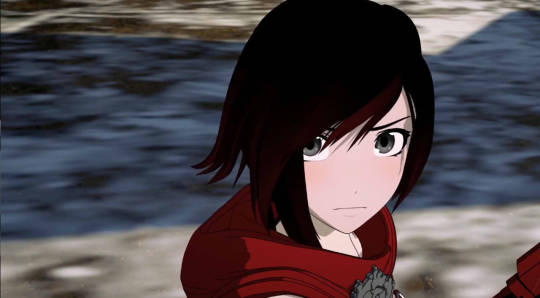
Whilesome of the show’s changes haven’t entirely been welcomed by its fandom (withits main change being something completely out of the showrunners’ control) I’dbe lying if I said these changes didn’t contribute to the show’s success insome shape or form.
Speakingfor myself, initially RWBY earned my attention because, like most RWBY stans, Iwas a fan of Monty Oum before and when I discovered that he had his own seriesproduced by RoosterTeeth, I was interested. I didn’t care what the story wasabout or what it looked like. All that mattered to be me back then was that itwas something from the creative mind of Monty Oum so I expected somethingepically action-packed.
At the start, I joinedthe RWBY fandom becauseof Monty however as the seriesprogressed, my reasoning for sticking with it and staying loyal to the showtranscended my past loyalty to the franchise as a by-product of anartist/animator I admired so much.

Thisbrings me to my main point. You want my honest thoughts onthe YouTube RWBY Rants, Key? To be frank, I’m tired of it. It is exhausting listeningto the tirades of these proclaimed RWBY YouTube reviewers who do nothing butgripe and express their disdain for everything the show does wrong according totheir standards. I am so fed up of seeing this happen time and time again.
Andwhat’s sad is that I don’t think part of this is even due to the show or theCRWBY’s fault. Do you know you are more likely to find a video shitting on RWBYas opposed to one that genuinely outlines its positive elements or at leastpresents a fair and just constructive argument of the good and bad of the show?Do you know how many RWBY hate videos the YouTube algorithm has recommended to mesince V6 concluded? It’s ridiculous.
ButI also know I can’t do anything to stop it. So long as RWBY exists, there willalways be these so-called ---I guess we can call them the ‘hate parade’ type of fans who wait like vultures to a carcass to pick apartthe show whenever a new season comes out.
Anddo you know what the sadder part about watching these videos is?
Thesevideos try to give the allusion thatthey are coming from a practical standpoint---as if the things they’repointing out in their reviews are genuine problems with theshow and that their personal advice to the showrunners are valid enough torectify these problems they indicated about RWBY.
Herein, lies my personal peeve with these types of reviews. The best kind of criticto me is one who can point out a flaw in something, justify why they believesaid thing is a clear flaw and then use their own understanding to outlinetheir concept for a possible solution to that flaw that they respectfully leaveopen to the creators of said property to take their advice or not.
However,this is not the case with these YouTube RWBY Rants; at least from the few I’veviewed. I’ll admit, there are some genuinely good RWBY Reviewers on YouTube. Ofthe top of my head, Thatkaitodan, MurderofBirds are two and believeit or not, I actually like some of EruptionFang’s reviews from time to time. Imay not always agree 100% with everything he says in his breakdowns but in myopinion, I can’t get too mad at the things he says in his reviews/video essaysbecause he’s able to justify it in a manner that I’m able to see where he’scoming from. Even if that justification comes from a place of unbridled rage.Referring to EF, I know he’s been receiving flak from FNDM members regardinghis recent views on Adam’s conclusion and Bumblebee; however if I’m beingcompletely honest here, I feel some of that bashing is unwarranted.
Inall fairness to EF, at least I’m able stomach his opinions a lot better than thatof other RWBY Youtubers. As I said, EF is able to properly defend his pointswell enough for me to grasp the validity of his statements which is the least Ican say for some of the others I’ve listened to.
Oftenat times, on the adverse side of RWBY YouTube, I find myself listening toYoutubers who spend more time outright bashing everypersonal gripe they have with the show as opposed to presenting a good argumentthan gives hindsight to why these problems are such an issue to them.
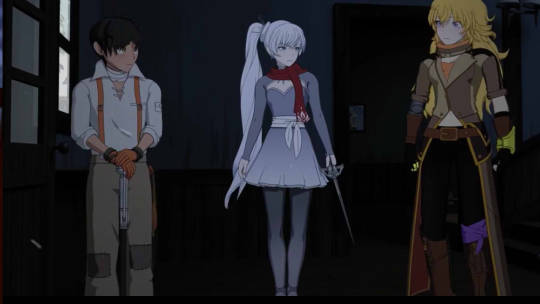
Theworst kind are the ones where this Youtubers point out flaws in the show andtry to give solutions to what the showrunners can do to fix these problems. Butmost of the time it’s done so rudely that it comes off more obnoxious thanhelpful. As if these Youtubers are proclaiming to know and understand moreabout the animation production process than the actual people running the showwho have the qualifications and past industry experience
I’llgive you two examples. Not naming names but I recently watched two videos fromtwo RWBY Youtubers---one critiquing the shows character designs while anotherwas a Youtuber’s final video explaining why they were quitting the RWBY FNDMfor good.
Inthe characterdesign critique, the individualexpressed their disappointment in the recent designs for the RWBY girls and thevillains as of the Mistral Arc. They then proceeded to offer their own tips for how the show could have helped to spruce up someof these designs. However rather than attempting to make their own alternatedesigns to the character outfits, this Youtuber just slapped some rather poorlylaid out flat base colours on top of screenshots of the characters in question.Which from a digital art perspective is…admittedly…lazy.
Iunderstand that not everyone in the world is a designer, much less is a characterdesigner or at least knows how to draw. However…if that is the case then whyare you, as the individual who clearly doesn’t appear to have the design skills,commenting on the work of a studio with a full production team of artists whodo have those required skills and experience and can probably rationalize theirreasons for going with the final designs presented in the show. You get whatI’m saying?
Ifone is going to critique the show’s overall character design then the least youcan do is make the effort to back up your claims. Illustrate your own designsfor RWBY character outfits. Create a mock-up 2D/3D screenshot illustration withproper lighting and atmosphere to see how your design ideas holds up againstthose elements of a scene and then compare that to the actual show’s productionwork. This reviewer didn’t even bother to attempt to maketheir own original designs or even redraw the current designs in their ownstyle and test out their suggested colourpalettes to see if it would fit with the overall design aesthetic of thecharacter.
Youmight be asking now: But Squiggles are you saying I need to know how to draw tocomment about RWBY?
To which I say: No.Being an artist is not a requirement that you as a fan need to really have inorder to comment about something you love. HOWEVER, if you are the type of individualwho has the massive chops to try and dictate a production studio with a team ofeducated and/or industry seasoned artists on how they should handle designingtheir characters without you yourself having the design knowledge to supportyour critiques then… you wonder why the CRWBY often get upset with these typesof fans and don’t take their comments seriously?
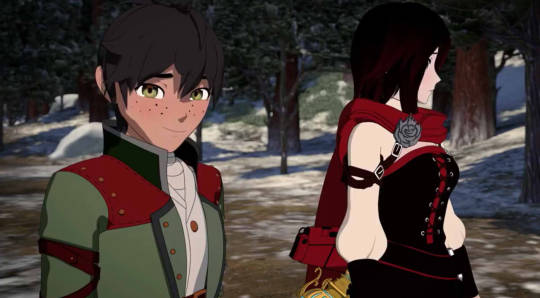
Contraryto what others might say, I am not a believer that RWBY is dictated by thedesires of its fandom community. That’s a comment I’ve been hearing buzzingabout since V6 ironically in the face of the recent hate crowd to gather fromwhat transpired with the Bumblebee pairing in the recent season.
Iunderstand that there are fans making the argument that the showrunners onlymade this pairing canon because its popular with its shipping community. Thesame can be said about Neo’s return to become Cinder’s protégé.
Admittedlywhile I might find the CRWBY’s decisions to be questionable at times, this still doesn’t prove that they are run by theirFNDM. If something happens in the show, it’s because it’s something theshowrunners and has wanted to do for some time and picked that current volumeto do so. The mere fact that that thing just so happened to correlate withsomething the fans wanted to see is just a matter of coincidence.
Thatbeing said, I will admit that I’ve noticed one or two members of the CRWBY castwho are guilty of encouraging certain ideas without the show itself officially confirming it in its narrative as yet.
In light of that, Iwill admit this. Regardless of whether or not you as a member of the CRWBY teamsupport a particular ship with all your heart, if other fandoms have taught meanything is that as a cast member you should NEVER encourage anything within yourown fan community. It never ends well and I’m seeing this repeated in RWBY. Butthis is not what I’m here to talk about right now. Moving on.
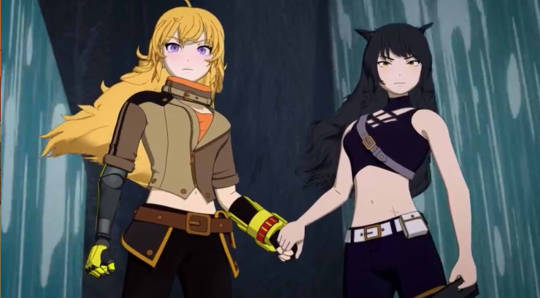
Inrespect to the video from the individual who was leaving the FNDM, I actually didn’tfinish watching their video because the instant they mentioned Monty Oum and their disdain for the CRWBY not living up to hislegacy and all that stuff, I couldn’t.
Ahyes, the classic ‘RWBY Animation hasn’t been the best since Monty passed away and the RWBYAnimation team are terrible because they can’t replicate Monty’s animation’ debate.How many times is this dead horse going to be beaten? According to this RWBY Youtuber, ‘replicatingMonty’s style of animation is easy andit is appalling the RWBY Animation Team can’t replicate Monty’s style afterfour seasons’.
Thiscomment not only annoyed me as a fan but also as someone who has studiedanimation before. Again, how many times will this poor dead horse be dug up tobe bludgeoned? Will these fans everallow Monty’s name to rest peacefully without bringing it up to tarnish theefforts made by the CRWBY to finish the story he started with them?
Iget it. MontyOum was a good animator.He wasn’t the best animator. He wasn’t some genius animation prodigy. He was a creative mind who had his own way of thinking and doing things andfrom that, he established a style about hisanimation that shined through his work. If you were to show me an animatedpiece done by Monty and the same piece animated by another person, I caninstantly tell you which one is Monty’s because Monty had his own style.
That’sthe appeal of Monty’s work, on my opinion. That’s what he became known for by hisfans. However, even though Monty was great at animating fight scenes, his way---hisstyle is NOT the only wayto animate a fight.
Recently,I took the time to go back and count the number of fights that happened overthe volumes. I did this because as of V6, I couldn’t help but feel as if theCRWBY might be shying away including moments where the characters areactually engaged in combat. I omitted the character shorts because onemandatory element of the Character Shorts is a fight scene. I just wanted tohighlight the individual seasons alone.
Someof this numbers might be a little iffy depending on what I counted as a fight,but here’s what I gathered.
THE VALE TRILOGY
RWBY V1C1:2C2:0C3:0C4:0C5:0C6:3C7:0C8:2C9:0C10:1C11:1C12:0C13:0C14:1C15:0C16:2
Totalfights = 12 Fights
RWBY V2:C1:1C2:0C3:0C4:1C5:3C6:0C7:1C8:0C9:4C10:0C11:4C12:4
TotalFights= 18 Fights
RWBY V3:C1:1C2:2C3:1C4:1C5:2C6:1C7:1C8:0C9:1C10:2C11:2C12:2
TotalFights = 16 Fights
THE MISTRALTRILOGY
RWBY V4:C1:1C2:0C3:1C4:0C5:0C6:1C7:1C8:0C9:2C10:0C11:0C12:1
TotalFights = 7 Fights
RWBY V5C1:0C2:1C3:0C4:2C5:0C6:0C7:0C8:0C9:1C10:3C11:5C12:1C13:1C14:0
TotalFights = 14 Fights
RWBY V6:C1:3C2:0C3:0C4:0C5:1C6:0C7:1C8:0C9:0C10:1C11:3C12:1C13:0
TotalFights = 10 Fights
Why I bring this upis throughout V4 and V6’s runtime I’ve seen one or two all-stars inthe new CRWBY animation team. While not all the fight scenes from the MistralArc were the best, there were definitely some good ones that I stood out to me.
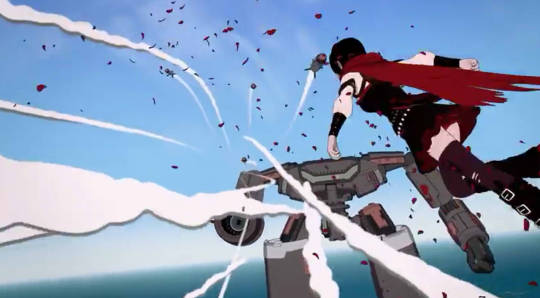
OneV4 fight that keeps being overly praised is the Tyrian vs. Qrow dual. Many fanstend to vouch that fight as the best fight of V4. The only reason that fight isso popular is because it was one of the more important fights of thatrespective season.
However,I’m being completely honest, the Qrow vs. Tyrian one on one was good but itwasn’t the only good fight of V4.
PersonallyI took enjoyment in the small sparring match between Yang and Tai Yang.Believe it or not, I felt like that moment, though small, was well animated andI’d actually give props to the animator behind that small scene. There was a nicesense of rhythm to that small fight that I quite liked.
Notmany folks will agree with little ole me regarding that scene but this just goesto show, we all have our own personal preferences with what we consider to be agood fight sequence vs a not so good one.
Often at times, Ifeel really sorry for the series animators cherry picked to handle the combatmoments for the current seasons because I feel like those animators suffer the most pressure and scrutiny in the eyes of the FNDM. I feel like some FNDM members are sofocused on nagging atthe current CRWBY to capture Monty’s old style of animating fights that they aren’t really giving these new animatorswith their own styles a fair chance toshine outside of Monty’s shadow.
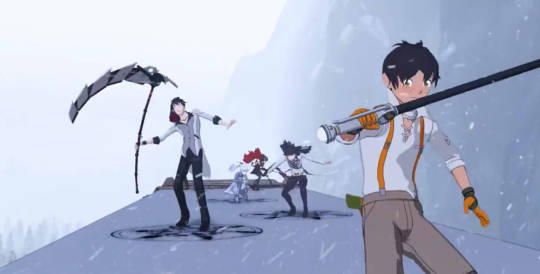
Again.I get it. RWBY was Monty’s brainchild. He’s the creator andno matter how far the current CRWBY takes the series, he will always becredited as its creator.
HoweverRWBY has come a long way since Monty’s days. The show haschanged.The overall look and visual style of the series has changed.Even the production pipeline and the software used to animate the series has changed.The CRWBY hasgrown allowing a greater mix of artistslending their talents to breathe life into the series.
Butwhat seems to kind of still be stuck in the past are some members of the FNDMcommunity. The ones who only watch the show because they are waiting to see thecurrent RWBY recapture that essence of Monty thatthey claimed the show lost after he died.
RWBY is dead after Monty passed away? In some ways, this isboth true and false. The truth is that RWBY did die. The old style that the show was being produced on was laid to restafter its creator unfortunately passed. The false is that RWBY didn’t end withMonty because it’s being continued in its current new style by the people whohelped bring it to life in the first place alongside Monty. The same people whoare diligently carrying on Monty’s project in his place. RWBY isn’t dead. It’sstill breathing. Still going. Because a story still needs to be told.
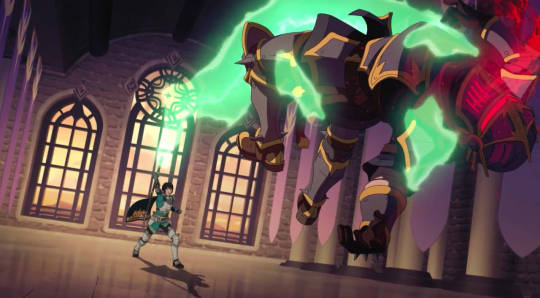
Ratherthan being judged for how well they can interpret a good fight sequence, theseanimators are judged for how well they can replicate Monty’s style. And when theseanimators don’t live up to that expectation, that’s when the shit storm begins.I myself have been found guilty of comparing the past animation to the present.However now I realized that I was wrong in doing that.
Ithink it’s high time some of these fans let go of the past and accept that theaction fight scenes of RWBY are never going to reflect Monty’s style anymore.
Montyis unfortunately not around to guide the current team with this. And they are doingtheir best to find their own style. To some extent, they found it in V6 becausethe fights in this last season were a tremendous improvement from V4 and V5.
Ifeel like there are some genuinely talented animators workingnow on RWBY who know how to create and sell a great fight and if left to theirown devices, they could really dazzle the audience with their own way of doingthings. I feel like since V4, the CRWBY have been experimenting with how they craftout their fights especially in the new Maya pipeline but it wasn’t until V6where I feel they finally found their footing again.
I think most fanscould agree that the fights in V6 were much better compared to theirpredecessors. One of the best one on one fights was the Neo vs Cinder clash. Whoever was the animator responsible for thatscene should honestly be given more opportunities like thatwhere their work can shine through because that fight was well done. Thesame can be said for the Maria vs. Tok oneon one fight despite how short it was. But the thing is, none of those fightsfelt like Monty’s style to me. It didn’t feel like someone was trying to copyMonty but rather it was someone who probably took a little inspiration Monty’soriginal work and the rest was them bringing their own unique spin to it.

Ifthe CRWBY have been trying to replicatethat Monty style in their fights for the past arc then I’m starting to thinkthat that is what’s been holding them back ratherthan aiding them to move forward.
Thisis why I find the whole point about replicating Monty’s style being easy to be ludicrous. Replicating someone else’s style,depending on the medium is not something you can just do on a fly. It’s noteven something you can perfect in a matter of years. It’s something that takes adeep understanding of the art form you’re using (in this case being animation),time, strict discipline and most importantly of all, guidance and critique from theperson who’s style your copying or someone else who is a master of said style and/orhas a great understanding of it themselves.
That’swhy sometimes you might hear behind the scenes tales about animation studiostaking sometime during their production pipeline to train theiranimators on the style or quality of animation they are trying to emulate in acurrent project. DidMonty do that with the CRWBY? Did Montyget the chance to pass his knowledge and technique onto otheranimators? Did Monty even get to see his story grow to what it is now?
Sadly,no. Monty was a creator who didn’t evenlive long enough to see his own idea flourish for the six seasons it’s beenrunning; now moving onto its seventh season. As far as I know, Monty passedaway as early as V2. Most people don’t even get the chance to see their ideascome to life but Monty was among those fortunate few who was given the shot tomake his idea a reality.
RoosterTeethgave Monty that chance after he worked with them on some of their otherprojects like RvB. He had made himself a household name within their companyand among that, he had made friends and had formed an in-house family with thecolleagues he worked with both on RvB and RWBY.
Saywhat you will about RoosterTeeth and the CRWBY. The original CRWBY who workedwith Monty between V1 and V2 were the people who knew Montythe most. They were his friends. His family. This is all the more reason why itdoesn’t give us, as fans looking in from the outside, the right to use Monty’sname to disrespect the people who knew him better.
Imay not always like what the CRWBY Writers do with the story but I respect themboth as writers. I respect Miles and Kerry because they are the showrunners. RWBY’s plotstarted with Monty, Miles and Kerry.
TheRWBY hate parade need to stop acting as if RWBY was made by Monty alone.Monty did not make RWBY by himself. Shit, he didn’t even create the plot byhimself.
Montyis credited as its creator because RWBY was his brain child and he will foreverbe remembered as the man who conceptualized this idea. But Monty did not writethe story of RWBY himself. He wrote this story with Miles and Kerry.
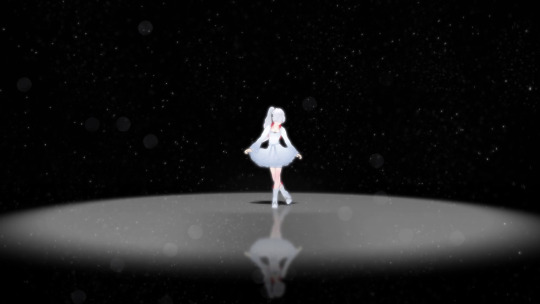
Whatfolks seems to be misunderstanding or downrightneglecting is that Miles and Kerryhave been with RWBY since its start. They are the two people who worked withMonty in developing the story of RWBY
Itis depressing that Monty only got to live long enough to see two seasons of hisbrainchild come to life.
Insteadof honouring Monty’s legacy by showing support to the people who worked with himto make RWBY happen, folks instead use Monty’s name to slander the CRWBY.
Tothe people who are guilty of this, how can you call yourself a fan? Howcan you call yourself decent human beings witha legit conscience by using a dead man’s name to disrespect the people who werehis colleagues and friends just because you were displeased with something theychose for the show? How is mouthing off the CRWBY and claiming that Montywouldn’t have consented to the direction they’re taking RWBY in a definition ofyour loyalty to Monty?
Howwould you know what Monty would have consented to? How would you know whatMonty would have wanted in general?
Didyou know him personally? I doubt any of you did. So why claim that in yourhateful comments?
RWBYis not the Monty Oum show. I've mentioned this before and I will say it again. RWBY is acollaborative effort. Monty may have conceived RWBY on his own buthe birthed this series through cooperation with RoosterTeeth and the talentedpeople who formed the creative team that made this show with him.
Andit’s those same people who are busting their asses volume after volume to keepthe show going. The CRWBY could have easily cancelled RWBYafter V2. It’s not the first time RoosterTeeth has cancelled a series undertheir name. They could have hung up the towel after V2 and called it quits. Butthey didn’t because they wanted tocontinue the show. They wanted to keep moving forward and finish the story theymade together with their friend Monty.
RWBY’sproduction takes time,thought, passion and effort. If the RWBY YouTube Critics community wishto be the type of people who want to tell the showrunners how to properlyhandle their IP, then at least back up your points with the same level of time,thought, passion and effort that is put into the show.
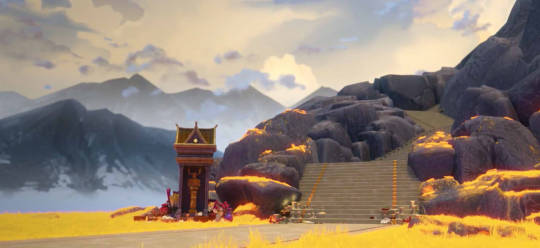
Andbefore anyone jumps at me and is all like, Squiggles, do you know how long it takes to makea YouTube video essay on my own time? To which I answer with, do you know howlong it takes to produce a full season of an animated production on a studiobudget and a strict deadline within a studio that is juggling multiple IPs?
Anyone can point out a flaw insomething or rather what they perceive to be a flaw in something. But it takes morework to point out that flaw, justify why it’s a flaw by your standards and thentake the time to suggest how it could be improved while throwing in your own workto help boast your claims. But no RWBY Youtuber Critics, at least from the onesI’ve seen, wants to do that. They just want to run their mouths and what’sunfortunate is that they will gather an audience of individuals who do the samewhen it comes to the series.
It’salright if you give your opinion but where it crosses a line is when a fantries to tell the showrunners how they should run their show. It’s even worsewhen they try to do it WITHOUT backing up their claims. You want to downplaythe effort and thought that someone else made without producing your own toargue against theirs?
You want totell the CRWBY how they should write the show? Where are your own retellingsof the show? Where are your own plot breakdowns? Your own scripts possibly accompaniedby storyboards and/or animatics to give others a taste of how your ideas wouldplay out?
You want totell the CRWBY that their character designs are terrible and need rework? Where your own conceptsheets containing dozens about dozens of drafts of redesigns that could betaken?
You want totell the CRWBY that their animation is terrible, that animating like Monty iseasy and the animation of CRWBY would look 100x better if they did x, y, z and123?
WellSkippy, why don’t you prove it? Where is your rendered animation that youpersonally modelled, rigged, textured and animated in your own spare time to backup your proclaimed assessments.
Youmight be telling yourselves, Squiggles why do all of that? That sounds like a whole lotof extra work just to prove points for a critique where I’m trying to tell theCRWBY what to do?
Towhich my response will be, EXACTLY.
Ifthe RWBY Hate Parade wish to make a mockery of the extra efforts the CRWBYmembers put into RWBY, then where is their extra effort? If they at least dothat then maybe I can respect them a little more as people who know whatthey’re talking about because they have the skills and knowledge to back uptheir arguments.
But how am I as the outsider listening in on some of theseYouTube rants supposed to take any of these people seriously when all they’redoing is making lengthy diatribes slandering the work of others and trying topass off as someone who knows more about animation and how it’s done thansomeone who does.
Dothese fans believe that makes them seem witty?It doesn’t. It makes them seem very disrespectful.
Idon’t understand the fans that are like this and I’m not sure if I want tounderstand. I don’t even wish to discuss them furthermore because at the end ofthe day, I can’t speak for these fans. I can only speak for myself and I knowwhere I stand as a fan of RWBY. If there is one advice I can give to my fellow FNDMfam is that weneed to stop drawing attention to the hate parade. Too often do Ihear more about the negative side of the RWBY community and their opinions ofthe series than the actual good that show and its FNDM has spawned.
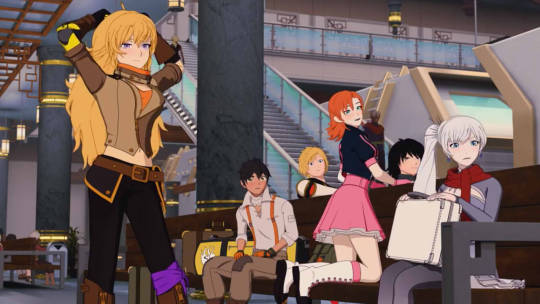
Weas the people who still love RWBY and are willing to accept and stand by it andits showrunners, flaws and all, need to become more vocal aboutshedding light on the positives of RWBY
Eitherthat or just ignorethe haters. Seriously, we need to stop giving these guys anaudience. Similar to how the RWBY Hate Parade spend their time mostly pointingout the negative in the show, we the FNDM often at times draw too much attentionto these folks.
Ina sad way, we’re kind of sending traffic over to them. Giving them moreattention that they don’t deserve.
Thesetypes of fans can talk but we don’t need to listen to them. Because for all theflak they give the series and its showrunners, the RWBY train is still moving;strong and unaffected.
Why?Because I’d like to believe the CRWBY don’t pay attention to the hate paradebut more focus on what they wish to do with the series while looking out to thesmiling fans who help spread good word about their show. And really, isn’t thegood still that’s very much there all that really matters?
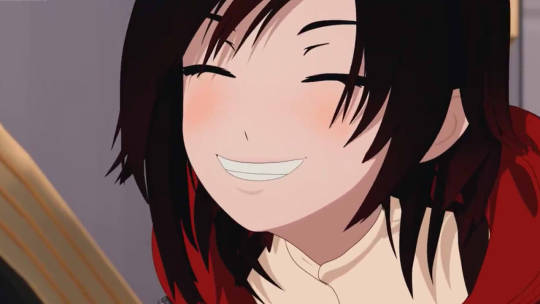
Soto conclude finally, this answer took me way too long to write. Sorry to haveyou wait so long Key. This answer took me some time to put together. Apologiesif it’s a very long-winded answer. I really don’t like discussing any negativestuff in the FNDM.
I acknowledge that it exists and it’s pretty much alwaysgoing to be there but that doesn’t mean I should give it any attention. But forwhat it’s worth, I hope I said enough to make my full peace with this topic.Cheerios!
~LittleMissSquiggles(2019)
#squiggles answers: rwby#rwby#oscar pine#ruby rose#weiss schnee#blake belladonna#yang xiao long#monty oum#crwby#roosterteeth#keyenuta
140 notes
·
View notes
Text
A satisfying sort of chaos
Advice to Aspiring Comic Book Creators by Gene Luen Yang
I turned forty last year.
When I was a kid, forty seemed like a lifetime away. I didn’t think about forty all that much, but when I did I imagined I’d have life figured out. By the time I got that old, I’d have cracked the code.
My actual fortieth year has been a blur of ink and airplane trips and diapers. Most days feel chaotic, but it’s a satisfying sort of chaos. And while I definitely haven’t cracked the code, I have learned a few things along the way.
That’s why, when I get asked for advice by aspiring cartoonists, I feel that I have something to offer. The following is for those of you considering a career in comic books. I hope you find it helpful.
1. Decide what’s more important to you: expressing yourself or earning a living through art.
Money and self-expression aren’t mutually exclusive in the long run, but in the short term they usually are. Books are a difficult way to make money. Independent, creator-owned comic books? Near impossible, especially when you’re just starting off.
If your primary objective is to make money through art, I’d suggest switching to a related field: animation, graphic design, web design. You’ll most likely be using your talents executing other people’s visions, but these sorts of jobs can still offer enough creative elbow room to be satisfying.
Don’t get me wrong—becoming a successful animator or graphic designer can be just as difficult as becoming a successful cartoonist, but at least you’ll have a chance at working for a company that offers health insurance.
But if what you really want is to get a deeply personal vision out of your head and onto paper, get a day job. Get a day job you like, one that leaves you with enough time and energy to work on your dream project on the side. As I’ve expressed in a previous post, I’m a big fan of day jobs. I’ve taught at the high school or college level for my entire cartooning career. My day job isn’t just a source of income, it’s also a source of inspiration for my books. Interacting with a variety of people on a daily basis naturally leads to stories.
2. Explore different ways of making comics.
When I began drawing comics, I drew on Bristol board, using a brush and a bottle of ink. Why? Because that’s how Stan Lee and John Buscema told me to do it in their book How To Draw Comics The Marvel Way. After meeting other cartoonists, however, I realized that The Marvel Way isn’t the only way. If you talk to ten cartoonists, you will probably find that they use ten different sets of tools. Heck, if you talk to one cartoonist at ten different points in her career, you will probably find that she’s gone through ten different sets of tools. There is no one right way to make comics, and art tools are personal. Experiment, read books besides How To Draw Comics The Marvel Way, get pointers from friends. Especially that last one. Nothing educates you on cartooning like having cartoonist friends. Which brings me to my next point:
3. Find a community of like-minded people.
I was lucky enough to fall in with a shockingly talented group of cartoonists when we were all in our twenties: Derek Kirk Kim, Lark Pien, Jason Shiga, Jesse Hamm, Thien Pham, Ben Catmull, Jason Thompson, and a bunch of others. We used to hang out once a week. We would draw together, critique each other’s writing, talk shop. I never went to art school, so my friends were my comics education. I learned about storytelling from them. I tabled with them at conventions. I even got publishing deals through them. Derek Kirk Kim introduced me to my current editor.
Making comics can be a lonely affair because you spend most of your days cooped up in your studio, alone at your drawing table. But the truth is, success often occurs within the context of a community. You have to find that community, grow it, and nurture it.
4. Go write. Go draw. Right now.
Have a groundbreaking idea for a graphic novel? That’s great, but I’ve got to be honest: Ideas are cheap. Everybody has at least one groundbreaking idea for a story. Most people have several.
But most people don’t have the determination to do something about it. If you actually sit down and write your story, if you draw it out in panels, you put yourself several steps ahead. Set goals for yourself. Give yourself a few weeks or a few months to mull over an idea, to do sketches of it in your sketchbook, to talk to friends about it. But once those week or months are over, you’ve got to move on to the actual writing and drawing, no matter how scared you may feel. You have to force yourself to do it.
A great idea that’s still stuck in your head might seem big and important, but in reality it’s a small and feeble thing. A successfully executed great idea, on the other hand? One that’s made the journey out of your head and onto something tangible? That’s powerful enough to change the world.
So go do it. Punch your excuses in the face.
Go write. Go draw. Right now.
(https://www.tor.com/2014/07/15/advice-to-aspiring-comic-book-creators/)
1 note
·
View note
Text
Conversations | Changing the World With Your Art, While Maintaining a Work-Life Balance

Find out how to stay focused and keep your mind, art, and heart inspired with a few tips from the IAP Interview Archives.
Below you’ll find top tips and advice for immigrant artists and creatives collected from conversations featured in IAP Newsletters across the years. Whether you’re telling your personal story, looking for a residency, or balancing a 9-to-5 job with your artistic practice, read on to learn more about the fine art of wearing multiple hats in the art world. For the full conversations, click on the interviewees' names below.
NYFA: What advice would you give to artists who are looking to share their personal story in the hopes of inspiring large social change but who do not know where to start?
Ambika Samarthya-Howard: I think the hardest part of sharing your personal story is that when people reject it, it feels like they are rejecting you. This is true if you are a writer or a video producer, or a painter. Art is always hard because it’s a reflection of your identity in so many ways, but it’s even harder when it’s a personal story that’s already fraught with vulnerability, like stories of trauma.
My advice is to first step back and ask yourself if you want/need to tell this story. I’ve often found telling my story to be key to personal growth and very cathartic and so whether it’s accepted in a film festival or publication, I was happy to tell it. Second, do you want to put this story out there? Artists can have personal projects that they don’t share and I think it’s worth asking, especially with sensitive subject matters, if it makes sense to put this out into the world. How would a public critique or rude comment on YouTube make you feel? Lastly, connecting to community and other artists can often make this process easier and help through the journey of not only producing the work, but also the much harder process of sharing it and finding the right channels for distribution.
Martita Abril: I found it was critical to be comfortable with myself and my own style and to embrace and engage my fellow immigrant artists like the community embraced me.
Techung: Well, immigrant artists naturally face more challenges, but they should never give up on their art and instead work toward finding possibilities. There are a lot of kind people out there—organizations such as NYFA and others who will support, give feedback, and guidance—but the drive should come from the artists themselves. It takes time and energy to succeed and one must not feel shy or discouraged to ask for help. Keep your mind, heart, and art inspired.
Angélica Dass: For me, the role of an artist is to start a conversation. Because, in the end, I really believe that I can’t change the world; the only person that I can change is myself. But if we talk more about these issues that you feel are not right outside (and as an artist you are able to put these inflections in the making of art), maybe other people can decide they want to change themselves. So that is why I see the role of the artist as someone that uses something (photography, archive, images, etc.) to generate empathy and propose a discussion that can have a direct impact on our collective future.
I always have the same advice for my students and it is: “Be honest!” It looks like something very basic, but really, be honest! You know it when you are doing something that is not right, not coherent, in a work of art. This is something that I miss in the art world, sometimes. Maybe we can be too critical and too political in a piece, but the truth is that we are just showing one side. My other advice is to give back. Give back to the community that you’re working with and try to be coherent and respectful of them.
Sébastien Sanz de Santamaría: When artists are applying for opportunities, they should ask these four questions: What do I need to advance my creative practice? Does this opportunity (grant, residency, workshop, etc.) provide the resources and means for me to advance my practice? Do I have all the requirements necessary to apply? Have I reviewed all the details of the program entirely? I think to be successful you must select the right opportunity at the right time. After that, I think perseverance is very important. Normally, one successful experience takes you to the next one, in a process that is connected with your artwork.
Ronny Quevedo: If there is something you need help with, reach out to someone that can help you. We shouldn’t be ashamed of our unfamiliarity with something. For example, I didn’t know how to develop a budget for a very long time. Try not to hide what you think you are not good at, instead be more proactive about facing what challenges you.

NYFA: What are your tips for balancing a job with an artistic practice?
Gisela Insuaste: I think of them [my job and artistic practice] as part of my identity as a human being (and engaged in activities that are important to me), and avoid thinking of these as separate, vying for my time and energy. I see them in collaboration.
Ideally, the administrative work connects, informs, or inspires my artistic practice and vice-versa, but most importantly, aligns with my values. Actually, that’s the case for all activities, relationships, etc. in my life. I’d like to say that once your values are aligned, then everything is perfect! But that’s not the case—it’s also about time management and prioritizing the work, making adjustments, always. Sometimes, administrative work will require more time, while a creative project takes back seat. Shifting gears for a 35-mile bike ride in the hills is just as important if your body and mind need to be outdoors.
A good practice for me is to take moments to play and socialize during intense work, either in the office or studio, with friends or colleagues. If need be, set parameters with people or spaces to manage time—decide what’s important to get the work done and surround yourself with what you think you’ll need. Assess where you’re at with your projects/personal well-being. Sleep, eat well. Go outdoors for a walk and get some Vitamin D!
Marco Antonio Castro: I have been active in the New York arts community since my arrival in 2005. I co-founded and curated MoD (Monitor Digital), the first Interactive Art Festival in Guadalajara, Mexico. We brokered partnerships in the public and private sector to give new audiences an access point to explore digital art and performances. From 2007 to 2013, I guided the vision, curatorial strategies, fundraising, and assessment for the annual festival, while tapping the diverse arts community that thrives in New York. MoD’s public programs, workshops, performances, and artists expanded the festival’s reach to ultimately serve as a pipeline for international artists to connect and collaborate across borders. The festival has helped me understand the process and care needed to reach new audiences and how to make a digital exhibition as inviting as possible without lowering the quality of the content. This has helped me in my practice to make sure I know how to talk about my projects in different ways, to make them understandable by different audiences.
Catherine Yu: For an art form so bound to structure and plot, remember with relief that life works differently from art. Life often goes off-script. For those who feel daunted by the unknown, allow me to quote the great poet Rainer Maria Rilke: “The future enters into us in this way in order to transform itself in us long before it happens.”
Leeza Ahmady: One of the skills I’ve managed to develop is to keep the insight that the art world has many parts and that each part plays an important role at the forefront of my mind. I see it as an ecology, a landscape. Because of this perspective, I’ve been able to include and engage with all spectrums of the art scene: the nonprofit and for-profit museums and galleries, academic institutions, art biennials and festivals, smaller arts organizations with similar missions, community organizations, and artistic collectives as well as auction houses and art fairs. I have achieved this by being conscious of each entity’s mission and by creating and envisioning programs that appeal and address the needs of all these varying operating sectors while keeping the empowerment and promotion of artists at the very top of ACAW’s priority. It’s all about making practical, conceptual use of what resources are already there and sharing the spotlight without being invasive of any one’s territory.
- Interview Conducted by Alicia Ehni, Program Officer at NYFA Learning
This interview is part of the ConEdison Immigrant Artist Program Newsletter #120. Subscribe to this free monthly e-mail for artist’s features, opportunities, and events.
Images from Top: Angélica Dass, Yo Soy Somos, Courtesy the artist; Ronny Quevedo, no hay medio tempo: there is no halftime (detail), 2017, Queens Museum, Photo Credit: Hai Zhang

#conversation#conversations#interview#iap#ambika samarthya-howard#martita abril#techung#angelica dass#sebastien sanz de santamaria#ronny quevedo#gisela insuaste#marco antonio castro#catherine yu#leeza ahmady#alicia ehni#immigrant artist program#iap newsletter#iapnewsletter#nyfa learning#nyfalearning#iap interview#iapinterview#immigrantartistprogram#instagram
1 note
·
View note
Text
Painters For A Day
youtube
Facts About Hiring a Painter and Decorator
Just as marketing a paint job that needs to be done every day of the year, bringing in new folks needs to be an ongoing proposition. We should be consistently filling the pipeline with folks; because, individuals will depart and it's much better to be ready and ready than not.
And as the advertising and marketing plan must be used as a map to find our manner, we want a hiring plan to keep us heading in the right direction. From the preliminary contact with us, till the day he's employed we want a process to comply with. We'd like a description for every position as to what meets our criterion.
We keep a stack of envelopes, already sealed and stuffed into an envelope with another stamped self addressed envelope inside, next to the cellphone once we call the applicant. And all we do is ask a number of questions to ensure the applicant ought to get an hire a painter software. Then we just jot down their title and addresses and ship them on their means. This part really functions as a check, everything is done for them, envelop, stamp, and deal with all they need to do is assemble the package deal after filling it in.
Next is the nose to nose interview, and when you've got ever been on both aspect you will know both sides are interviewing one another. The applicant may be very motivated in seeing what he may be entering into, and naturally the hirer desires to know who it is he is perhaps bringing into the household.
Risky enterprise on both sides. Questions like: What was it about your final job that you simply preferred? Or, what happened to cause you to leave your final job? And what was it about your last job that you hated? The important thing being that they're very open ended questions and can't be answered with a yes or no. The very best technique Painters For A Day is to sit back and listen, without emotion or judging. You can see that individuals if left long sufficient will tell you worlds of issues. Many books have been written about body language, and there are some that present physique postures and what they imply. It is not so necessary which postures; but, after they use those postures.
Does this individual know how to paint? We've an previous double hung window that has been mounted in a frame that is free standing. It is a 6/6 divided Here is Social Profile double hung window. Give the painter a brush and paint and simply watch. In half of a minute you'll know volumes about this persons portray abilities.
Lastly having the painter read the Operations manual will give him and you, a very good really feel for one another. I discover the better job of hiring Read Blog here comes from listening and watching. The minute I start to preach, is when I lose management, so I've realized to only shut up and pay attention.
A recent coat of paint can do wonders for the within or outdoors of your home. Hiring Click here for Wikipedia painters may also help you achieve a glance that can add to the worth of your house.
When householders are searching for a good way to freshen up the seems to be of their properties, a paint job could make an enormous difference. Choosing to use interior and exterior paint to a home can really do quite a bit to extend its worth, too. In case you're fascinated by selling your own home in the close to future otherwise you just wish to preserve the value of your property, then investing in a brand new paint job is a smart alternative.
Hiring painters to add some colour to your inside space is a good way for you to add value to your property. If your partitions are dingy or colorless, you could have a troublesome time attracting buyers; however, a recent coat of paint will make your property far more interesting. Potential consumers desire a dwelling that is aesthetically pleasing and cozy to spend time in, and new paint will give the inside of your house a clear and relaxing feel.
Hiring painters to complete this work will price you a little, but in the end it would allow you to get a higher price to your residence. Keep in mind that impartial colors enchantment to the best number of home buyers, however don't go so neutral that your own home looks sterile. Warm lotions and basic browns are each great selections.
In case you are portray a person room or perhaps your complete dwelling, getting achievement starts by hiring the correct painter to do the job. Finding a great painter involves extra than just opening up the cell phone guide and calling the http://paintersforaday.com/ first portray contractor that you simply discover. Instead, you want to put some careful thought and consideration in to the decision. Here are one of the vital in style mistakes people make when hiring house painters so as to avoid them:
A lot of individuals contact the very first portray company that they'll find without bothering to do any research at all. Unfortunately, most of the time, this winds up in catastrophe. You should always hang out researching a business prior to getting those to focus by yourself dwelling. Ultimately, the ultimate results of your painting undertaking rely on the contractor you rent knowing what they may be doing. In the minimum, you should read critiques and verify qualifications prior to hiring a company.
You may additionally wish to think about asking around for suggestions out of your friends, family members and coworkers. There isn't a higher endorsement for a painter than a advice from somebody you trust.
One of many more frequent mistakes folks make when selecting a painter is selecting the smallest value. If one contractor will come in far lower than the others with their quote, there's usually a cause. Perhaps they lack experience. Worse, they will minimize corners by using inferior high quality merchandise or rushing with the job to be succesful to supply tremendous inexpensive prices.
On the entire, you can anticipate to be much better off going with an organization which is available in somewhere in the middle making use of their quote. That usually means that they are not cutting corners, nevertheless they aren't overcharging you, both.
Earlier than any work begins on your private home, it's essential to sign a written settlement together with the painting contractor that clearly outlines what job is being carried out and exactly how much you are being charged for the position. Be sure that to include any details like whether the contractor is accountable for cleansing after the job.
The more clear and concise your agreement is, the unlikely you can see any misunderstandings between you and the contractor. Plus, with the settlement in place, the contractor will need to run another work or adjustments to the plan by you earlier than continuing. This means you won't wind up with any unexpected bills or unanticipated outcomes after the mission.
By avoiding these common errors, you will be able to get the perfect house painters for no matter undertaking you could have lined up. Taking the time to choose a corporation that's qualified for the place and clearly outlining what your expectations are for the challenge may help you get the outcomes you want at a value you actually can afford.
So, that you must hire a face painter. While the art of face painting is nothing new to the vast majority of us who've frequented carnivals, festivals, and different occasions that draw the attention of kids, the apply of hiring one for private, intimate affairs like birthday parties is. Previously, such efforts have been reserved for those who needed extravagance and had the money to carry it to even the simplest of get togethers. In recent years, the face painter has made onto the want listing of many a child with a party looming across the corner... much to bafflement of some of their parents.
As with all entertainer you invite into your personal events, hiring a face painter could be a stressful course of when you aren't armed with slightly primary data and some insider methods that can assist you smooth out the waters. If you happen to take the time to line up your ducks and make use of the guidelines beneath, your baby shall be thrilled to have an extra special treat for his/her special day, and you will have some fairly colourful memories to pat yourself on the back with.
1 note
·
View note
Note
Is it 100% rude and unacceptable to give feedback to artists and creators? Or is there a nice way to do it?
This is a great question anon. I’m sorry it took me so long to reply; I wanted to think about it properly before I gave an answer.
Positive feedback is always a great thing. It’s especially awesome if you’re able to be specific about WHAT about the thing you liked or little details you noticed. Highlighting lines in a fanfic that made your heart flip, or pointing out to an artist that you love the way they draw a thing is such an amazing compliment because it means you not only saw the piece, but you saw the person behind it and picked up on something extra that made it special to YOU. The same is true for media; feedback on storylines or characters that really resonated with you, plot decisions that took you by surprise. A single tweet about how much you loved a specific thing can honestly make someone’s entire day.
Negative feedback is a different story. I would never say that it’s always 100% rude and unacceptable to give negative feedback, because it’s more complicated than that.
Scathing reviews have been a thing as long as people have created things, from plays to music to movies. In the past, people could just turn a blind eye to them if they weren’t in the mood for them. But in today’s world with @ ing, folks involved in the making of the thing are getting their attention explicitly directed to the negative feedback. And with much of these exchanges being a short amount of characters, it’s easy to absorb a storm of negative feedback in the span of a few minutes, all directed at them. There are real people with real feelings behind those social media accounts and I think the facelessness of a computer or phone makes that all too easy to forget.
So rather than break it down into “this is an okay sitch for negative feedback, this is not” because it’s complicated and subjective, I urge you instead to ask yourself these questions before you give someone direct critique.
1) Why am I critiquing this thing?Are your motivations altruistic or selfish? Do you want to see an artist improve their skill, or do you want them to cater to what YOU want to see? Has the creator made a misstep or done something offensive that they may not realize is offensive? Are you just looking for an avenue to vent your rage over the thing?
2) Am I offering constructive criticism from a similar playing field as the person whose work I’m criticizing?People respond better to critique from people who are or have been in their shoes, or at the very least know them IRL. I ask for art critique from my fellow artist friends. Similarly I recommend not giving show advice to cartoon showrunners unless you have some idea of how animation production works. It’s a collaborative effort and chances are if you’ve thought of a critique on the final product, so has someone else involved in the actual making of it.
3) How is my critique helpful?Will it help a writer become a better writer? Will it help future projects, or raise awareness of something that needs to change?
4) What am I hoping the response will be to my critique?Do you just want the person to acknowledge your existence? Do you want them to change the thing for you, or apply it to future endeavors?
Dig deep and be honest with yourself because you’re the only one who has to know the real answers before you hit send.
Personally I feel that when it comes to critiquing media, the best scenario for negative feedback is when you feel something wrong is being done. For instance, a cis woman playing the role of a trans man. In @ ing the people involved in the film you add your voice to a sea of others and can actually make real change happen. The decision to cast SJ might be reversed, and ideally more opportunities for trans actors will open up after the internet raises awareness of this issue and why it’s an issue.
But Voltron is a cartoon, a locked one at that. The calls for Lance to be Black Paladin or for Shiro to hold onto his role are borne out of selfishness and an arrogance that suggests fans know better than showrunners what’s best for the show. There is no good way to give them direct negative feedback, no matter how politely, without coming off as an Entitled Fan With Ideas.
Instead, the best way to encourage change (for future scenes, or for future DW/LM/JDS projects) is to @ Voltron crew with the things you LOVE about the show, rather than the things you hate. Ex: “I love that the Paladins are so diverse”, “I am loving Allura as the strong female character rather than the damsel in this reboot”, “The space battles are by far my favorite part of the show and I always look forward to those scenes the most”. By being specific about what you love, you’re not only encouraging the positive feedback loop as outlined above, but you’re telling marketers exactly what about the show makes you want to throw money at it and why you tell your friends to throw money at it too.
86 notes
·
View notes
Text
Sammy Zeisel

Hometown?
Bethesda, MD.
Where are you now?
Chicago, IL.
What's your current project?
I just opened and closed The Late Wedding by Christopher Chen (one of my favorite contemporary playwrights) with a company called The Neighborhood. It was a strange, beautiful, and difficult play about Italo Calvino, heartbreak, and the transmigration of souls performed in the "Rummage Room" of a church. We sourced all of our props from the boxes of shit that were left in the space after the church rummage sale and got some great use out of the organ that happened to be there, too. The whole thing was kind of magical.
I also am in post production on a short film about a girl getting her period for the first time at her friend's birthday party titled The Care and Keeping of You.
Why and how did you get into theatre?
Well, my mom is the Associate Artistic Director of Imagination Stage, a children's theatre in Washington DC. I grew up in rehearsal rooms. As I'd imagine is the case for most of us, I started out acting at summer camps and in school plays. While I was playing Renfield in my high school production of Dracula, it occurred me that I might actually I want to do this for the rest of my life.
What is your directing dream project?
I always find this question difficult because I see myself as highly responsive to the people and places at my disposal. A piece of theatre does not make sense to me out of context.
THAT SAID I love me some Chekhov. Specifically, I've been on a bit of a Cherry Orchard kick recently. There are secrets contained in that play about the potential for (or futility of) human change that speak directly to this moment. The political and the personal are so beautifully intertwined. Plus, it’s goofy as hell. Chekhov plays embrace the entire contradictory mess of being a human. How to not, as a director, deny those contradictions by providing easy answers? I see that as an ultimate directing challenge.
What kind of theatre excites you?
I like theatre that takes on the responsibility of its liveness. This can happen in so many different ways: virtuosic physicality (a tap dance?), engagement with the audience's imagination (a person becomes a bird?), direct engagement with the audience (playful meta-theatricality?), or--maybe my favorite--some sort of more subtle, silent communion (Annie Baker). A piece of theatre is not just a story, it is an event; a director is not just a storyteller, she is a coordinator of moments in real-time.
I like to see truthful characters interacting within strange theatrical forms. I think that is what we are: deeply human creatures inside of forms that we do not understand. I like theatre that embraces uncertainty and, in that way, coaxes us to into a more comfortable relationship with our own uncertainty. Violence (outward and inward) stems from a need for control within life, and so, theatre that makes us to sit in an uncomfortable state of unknowing has the capacity to make us gentler.
Finally, I seek out any art that contains a little hint of the inarticulable. A piece of art should contain secrets.
Also probably all theatre should be funny.
What do you want to change about theatre today?
We have a lot of conversations about the need for riskier choices when it comes to content. And we do need that. We should be constantly pushing the boundaries of content and honoring stories that have been neglected. But those stories should also be paired with riskier forms. From what I can tell, theatre companies are more frightened by experiments in theatrical form than almost anything else--probably because a challenging form has perhaps the highest potential of turning an audience off (audience members didn't walk out of The Flick because it is about three people who work at a movie theatre). In the age of Netflix, however, if we do not find forms that are inherently theatrical we will become obsolete. But if we find inherently theatrical forms that contain the electricity of live communion, we will be providing something that the world is desperately hungry for.
And obviously we have to figure out some way to make theatre more accessible. Theatre is basically a hobby for rich people. It's just true, and we all know it and are deeply embarrassed by it. But what can we do to combat this? I certainly don't know. But it might have something to do with returning to bare essentials. We need to be paying artists and we need to be lowering ticket prices, so what gives? What if we made our productions with fewer resources? What if we placed the storytelling weight firmly on the back of the actors and the imagination of the audience? After all--engagement, intimacy, communion--this is REALLY what we offer. Within greater constraints, we might cut costs and revive our medium in the meantime.
What is your opinion on getting a directing MFA?
Not sure. Probably right for some and not for others. I am personally intrigued. I would love some time to discover myself outside of the crucible of the "real world."
Who are your theatrical heroes?
Oof ok here are a couple that come to mind right now:
Anne Bogart (her discipline, her articulation, her curiosity),
Will Eno (his verbal playfulness, his sadness, the intimate communion of his plays),
Andre Gregory (his spiritual/minimalistic approach, Vanya on 42nd St.),
Mary Zimmerman (her theatrical imagination, her physicalization, her childlike wonder)
Annie Baker (her lessons in patience, restraint, yearning character),
Edward Albee (his social critique, his plea for honesty, his courage in the face of the void)
Sarah Ruhl (magic, poetry)
Charlie Kaufman (film director, a storytelling North Star)
My mom
Any advice for directors just starting out?
I am a director who is just starting out, so anything I say is also advice to myself. So here are a couple of things I have to tell myself over and over:
You are you. The more directors you watch, the more you see that no two directors do ANYTHING the same way. In fact, equally incredible directors do things in precisely opposite ways. What does that mean? What makes those directors good? They are good because they know themselves. They are working from a place of personal authenticity that no one could have possibly taught them. And so you cannot emulate them. Emulating a good director will make you a bad director. You can only work at getting closer and closer to the director that you were meant to be from the beginning.
Direct stuff. You can only discover who you are as a director by directing. Find cheap-as-shit spaces. Hold rehearsals in your apartment. Produce your own ten-minute play festivals. Do stuff that leads nowhere because it all leads somewhere.
Direct the kind of stuff you say you want to direct. I've had a tough time with this one. It can be scary to actually DO the work that you say you love. Because it's super vulnerable, I guess. But until you present the work that actually feels like your jam, no one will have any idea what your jam is. You probably won't even know. Be brave enough to do the work that turns you on.
Craft is generosity. It's not all about discovering who you are. Directing is a craft. And by that I mean, there are concrete skills involved: how do you create varied stage pictures? How do you make sure an audience hears important information? How do you stage compelling transitions? Maybe think of getting better at these things as acts of generosity. When you put work into these elements, you show an audience that you care about every second of their experience.
You will disappoint yourself. Making stuff comes at a price. You will feel inadequate, and you will make work that doesn't feel like you. Lean in. Hold on to faint glimmers of hope. Do better every time. Inch closer and closer.
Interrogate your privilege. If you are doing this, you are probably the beneficiary of a certain amount of privilege. I am the beneficiary of a massive amount. If this is true for you, acknowledge it. Interrogate the narratives you are drawn to. Think twice before putting yourself on stage. Doubt yourself and listen to the wisdom of the less privileged. Use the love and care you've enjoyed in your life to create loving, caring spaces for others.
Be kind. Be critical of the work you see, but be curious about where your criticism comes from. How would you like your own work to be seen? How can you approach other artist’s work with that same generosity? Separate intention from execution and acknowledge how terrifying it is just to be out here trying. Strive to be an enthusiast: you will learn more, people will want to work with you, and the inside of your own head will be a nicer place to live. (You will also be a better director if you are not driven by ego, insecurity, and a need to prove.)
Don't listen that hard to people's advice. Most people who are giving you advice are telling you what they need to hear, not what you need to hear. Nobody knows what they're doing, and no-one moves forward in the same way.
Read more books, listen to more music, watch more movies, think about things a lot
Plugs!
Rumple: Last year, I developed a children's musical adaptation of Rumpelstiltskin with Chicago folk band, Friends of the Bog. It's a feminist re-telling of the strange old tale, filled with stellar folk jams and tap dancing puppets. It's weird, theatrical, and full of heart (think Pig Pen Theatre Co. meets Spongebob). And we are looking for a home for it. Hit me up if this tickles you and you have a lead.
Beth Hyland: One of the best young playwrights in Chicago or probably the country. She's also my pal. If you don't know her, you should get on that.
Chicago: The reputation that Chicago has for community and authenticity is grounded firmly in reality. Artists are struggling in Chicago as much as they are anywhere else but they are surrounded by their friends. There is vital, community-building theatre happening out here in church rummage rooms and abandoned storefronts. Just saying.
My website. My email: [email protected]
2 notes
·
View notes
Text
I have a query regarding the art freelancing industry and its available resources. A majority of the content and advice available seems to pertain to artists who: have assembled a portfolio; have a regular, but modest, consumer base and audience; have established professional or academic connections; have investments and assets via part-time employment, office space, credit, etc.; have a reliable network and social circle to critique and give feedback on pieces; own or have access to a variety of websites, software, technology, and tools... There is no argument that this form of resource is without value; it is necessary for its intended audience so that they may move forward into their own businesses, or earn contractual employment... I am simply disheartened by the lack of resources available to artists who are struggling to advance/break into this criteria. While the primary issues and discourse of unknown and amateur artists regard technical skill, consistency, pricing, marketing, and self-confidence, there are aspects of the up-and-coming that are oft left undiscussed -- this mainly being the reality (or acknowledgement) of art and artists existing as a competitive industry, and shortcomings in acquiring the necessary tools and outline of stability as mentioned above. The notion of viewing other artists as competition is a social taboo, yet this is atypical for most other forms of industry. All industries are tangentially based in creative passion: freelancing in visual-art is a form of commerce and audience engagement in much the same way programming and journalism is -- and no one would deny those fields as being competitive. A certain threshold of technical skill, management, marketing, education, and professional reference are needed to compete in those exampled industries -- the same again applies to art. I agree that successful contemporaries should be given their due praise and be seen as goals to strive towards -- but personal feelings of inadequacy will still emerge, particularly for those who’ve been struggling for years to get onto the scene (near to upwards of a decade). I think those feelings need to be brought into broader discussion and provided actual solution -- not shut-down with half-hearted platitudes and accusations of petty jealousy. Visibility is extremely important to upstart artists, for their business and sense of self-worth, and I do not believe it is for a lack of trying that many are going without such accommodations. People like myself are self-sustained and have been practicing for years, yet have no network, have little to no friends or support, and have scarcely any professional or academic background to lean on. There seems to be no community available to (or wanting to foster) the unknowns. There seems to be no outreach for artists with a less-than middling online fellowship. There seems to be no recourse for artists with a passion to create who do not (or cannot afford to) follow trends -- and anecdotally I see the most successful original-content comes from artists who already have an established profile. Perhaps this is coincidental, but I think it’s more to the point that resources for socially and network starved artists are illusory, if not entirely absent. With the already arduous and time-consuming struggle to “get ourselves out there”, disabilities, poverty, and chronic illness can further impede the finding of a niche to where we forgotten may “fit-in”. When already lagging behind in public favor and visibility, such complications can be a killing blow. I think this serves to highlight the reality of the capitalist nature of freelancing: personal and audience investment requires tangible, real-world investment in media, travel, and technology -- and sadly not everyone can afford to be in the know or structure a collection/hobby around figurines, games, comics, and other media. I think we need to stop avoiding the discussion of freelancing as capitalist trade and competition, and seek to empower struggling artists with the tools to overcome their struggles and become viable competitors.
When it comes to marketing, trial-and-error (or trial-and-failure) are a constant in any business, but it feels like there is something people in similar positions to myself just aren’t getting or being offered. Unfortunately, the current input available to modern freelancers does not apply to many struggling amateurs, and I pray for more readily available advice in conquering pitfalls of social media, networking, and working with illness or poverty. This was mostly just observation, but I am open for discussion and willing to take any advice or resource into consideration -- information needs to be shared!
#art#advice#freelancing#self-employment#self employment#long post#text post#there is no hostility meant here#i am concerned for the well-being of artists in a similar position to myself who are struggling towards self-employment#we need a community!
3 notes
·
View notes
Text
Behind the Scalpel #2 - Dar’s journey with cover design

Hey there, traveler!
Today I’d like to share a personal story concerning both the woes of being a writer, my mentality on self-publishing, and our current project. This is the story of how I created the cover for our WIP.
To tackle a few things heads up, I’m not a complete amateur when it comes to graphic design, however, I am only scraping the surface. I’ve never received any education in graphic design but it became a kind of guilty pleasure for me as soon as I found the magic of MS Paint, so I’ve got some years of self-education, reading up on the topic and long hours of just d*cking around with graphic software behind my back.
Given that, I’d only recommend doing the cover yourself if you know what you are doing or you don’t have any other options – me personally falling in the latter category. We are trying to self publish with little to no funds, to begin with, and thus have to make some tough decisions. One of them is the fact that we can’t afford to hire a professional cover designer, so I either do it myself or not at all. Since giving up is not an option, I decided to do it or die trying. Here’s how I did it.
Basically, I created the first version of the cover before we finished the first draft (not the first English draft, the first draft in our native tongue.) All I knew that it’s shaping up to be a desert fantasy, so I need something with that feeling. So as every newbie would, I hit up google, typed „desert fantasy art” and clicked images. I found a nice looking art, added a black border, slapped a title onto it and this is what arose from that witches’ brew of a design:

So, there are a couple of problems with this. First, it is boring. You look at it, admire the art for a splinter of a second, and go on about your business. Second, which keeps coming back, is the genre. This one looks like a Jane Austen romance when it should scream epic adventure and magic and stuff. The third problem was the method I acquired the art because Google Images is rarely a place to browse for royalty-free stuff you’d use on a book cover. But I was content with this for a while, shoved it into a folder on my laptop, and kept writing the book.
Months pass by and we both started to lose enthusiasm and needed something to fire us up once more. I remembered the rush of excitement when I designed the first cover, so I got on my trusted laptop to do it all over again – this time trying to follow the law and use royalty-free images. But learning from the first cover, I wanted to do something exciting, something someone would click on out of curiosity, so I started browsing digital artworks on Pinterest. This is actually good advice for anyone looking for inspiration – but inspiration only. Don’t go wildly right click-saving things from there, or you run into the royalty thing again.
What I found were fractals. If you’re not familiar with the term, fractal arts are procedurally generated, mostly geometrical images which look trippy as fuck and if an artist gives their personal touch, they can look spectacular. To give a great example, I searched for royalty-free (see? I’m smart :3 ) fractal images and found this:

As you can see it is really eye-catching and I haven’t seen this style used as cover before, so I thought I can make something different. I got to work, added shaded borders, and a more fancy title and created cover v2.0.

Way to go! But there were still problems with this. We realized that one of our strong suits as writers is painting a vibrant world that’s easy to imagine yourself into. By using a lot of different senses in the descriptions one could almost feel the heat of the desert, the cooling sea breeze from the port, or the smell of roasting shashlik – but this cover didn’t give off this vibe. It felt cold, brittle (hence the silver) so it still needed a few changes. That was pretty easy to fix, I just tampered with the color temperature and voile! Cover design v2.1 was born:
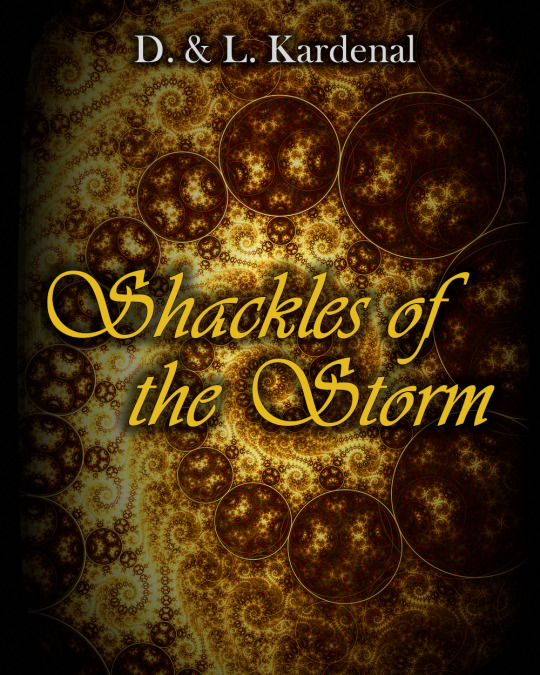
Now, this was hinting at the right vibe, it looked almost like a quicksand swallowing the title which was all nice and good, but this was about the time we run into a bit of advice we then saw everywhere – research the market. Now, dear readers, what the fuck does that mean? It took me a while to figure out, but what people mean by that is to go on Amazon or Barnes&Noble or wherever you satiate your bibliophile thirst and look at other successful book covers in your genre. So I did, browsed Amazon best-selling fantasy books for hours, and noticed a few trends. First, most fantasy books didn’t use a fancy font, those were mostly for romance novels. The second is, pretty much every fantasy (by that I mean the myriad of Brandon Sanderson, George R.R. Martin and Anthony Ryan books) used some kind of image in the middle instead of just the title. Armed with this knowledge I jumped back on GIMP and got to work once again.
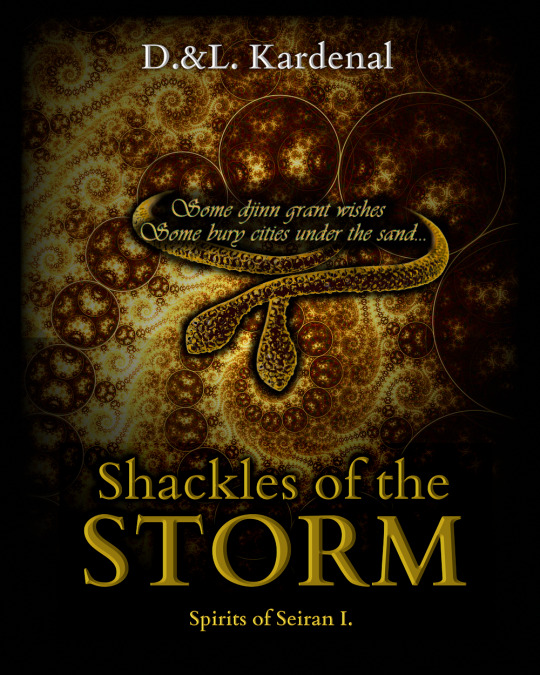
Now it was looking more like the big names, an epic but simplistic font, a thing in the middle (in our case a two-headed viper bracelet, a piece of important jewelry from the book) and even a quote. Now was the time for me to send it to my taste-testers: my younger sisters, both book nerds in their own genre.
And they told me they liked the previous font better. They found the snake and the quote a nice touch, but the font was too bland. Because at this point I had no idea who to trust with advice, I rushed to correct it and come up with a new, better version combining those two elements. So after a bit of designing again, cover v2.3 got birthed into this shining world.

Looking fancy, eh? This was the time I learned how to create a golden text effect without photoshop (yeah, I forgot to mention, photoshop would eat up, chew, and spit out the 4 GB ram in my 6 years old laptop, so I use GIMP instead). This was almost perfection… almost. We were content with this for a few weeks, right before we ran into several niche fantasy covers we quite liked that were more on the simplistic side, with a dark background, a fancy title and a beautiful border frame. We thought if it caught our eyes, it would catch other people’s attention too, so the designing bug bit me again and I opened GIMP for the umpteenth time.
The idea was simple: create a black background with the fractal as a border, an artistic title and maybe some extra touches. This was the point we regressed back into the black and silver style because black and gold was too mainstream. It was more difficult to get right, but eventually I came up with this:

This time I was sure I hit perfection. It reminded me somewhat to Game of Thrones, it had two viper heads and a simplistic style. Around this time we found our first somewhat useful beta-readers, so I was brave enough to show them. The answer was in line with our reoccurring theme of being unable to paint a clear genre image: they thought it looked like a contemporary girl novel with some spooky snakes for a bizarre cavalcade effect. I’m gonna admit it, it felt like shit but being an author is about constant growth and learning from bitching beta-readers, so I decided to do some more research. I found a couple of useful resources, to be precise, a blogpost from Neha Yazmin (link here: https://nehayazmin.blogspot.com/2020/05/Book-cover-design-tips.html ) and a youtube video by Just Angus (https://www.youtube.com/watch?v=9SgJV8wGkcI). They’re both useful and entertaining, so go give them a look. We realized looking beautiful to us means nothing if people pick up the book and think about the wrong genre, thus they will be disappointed by the book by default. We had to make it look like an adventurous fantasy set in a magical desert, so I had to change my entire mindset.
I was browsing Pinterest one evening and found the magical looking Arabic calligraphy, precisely Take the Leap by Everitte Barbee. With a rush of enthusiasm, I grabbed the image and ran away with it, not thinking about some important things, and created this.

Now things were shaping up to be almost pitch-perfect. The font was fancy but fantasy-esque, the style was eye-catching but minimalistic, it screamed middle-eastern and it was unique. But remember the important things I shrugged off? One of them was the royalty-thing again. Turns out this image (or to be precise the ink and paper version of it) was already used in another book cover. Also, Arabic calligraphy uses words from the Quran. Now, I’m not a very religious person and I know next to nothing about Islamic religion. As much as I adore ancient Arabic aesthetics, I think it’s common courtesy to leave things you don’t understand a word of alone and not use them obliviously in commerce. But I believe I hit something on the head with this silhouette filled with fractal art, so I searched for some free stock images until I found what I was looking for. So, at the end of this surprisingly long wall of text about almost a year of redesigns and trial-and-error style approaches, I’ll leave you with our final cover (for now at least). I hope you found it entertaining and somewhat useful, if you have any questions or even critique, please, let me know in any way you prefer. Bah, it was nice to get this off my chest. Stay sharp, travelers!
Dar
The current version of our cover:
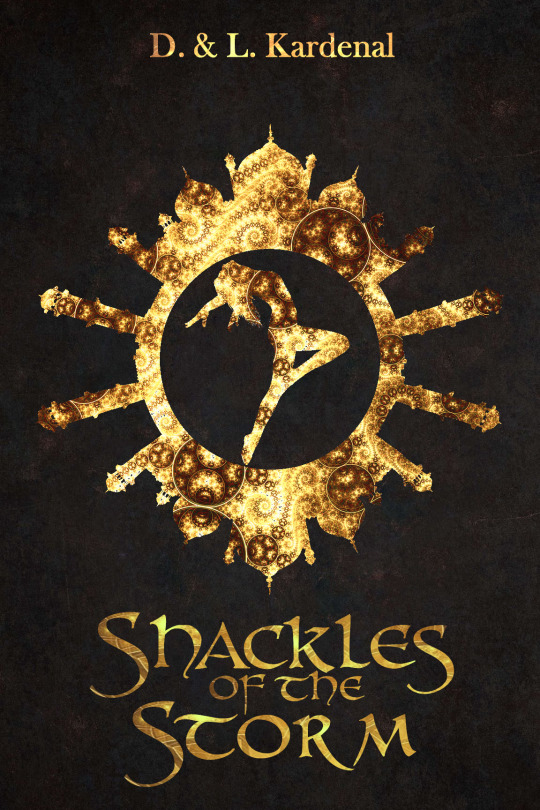
#behindthescalpel#amwriting#amdesigning#book#bookcover#book cover#fantasy#writing#writers#writerblr#writeblr#WIP#current wip#bookworm#amreading
0 notes
Text
The Perks Of Being a Food Writer, According To One Of Australia’s Top Restaurant Critics!
The Perks Of Being a Food Writer, According To One Of Australia’s Top Restaurant Critics!
Dream Job
by Amelia Barnes
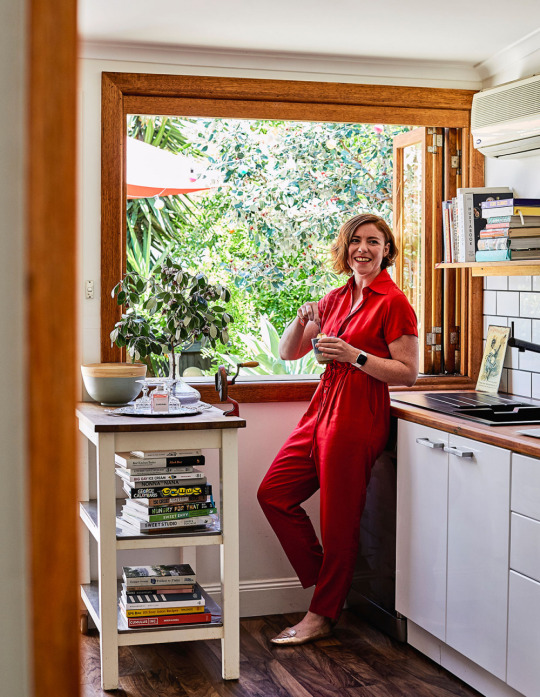
Gemima Cody, senior restaurant critic at The Age. Photo – Amelia Stanwix for The Design Files.
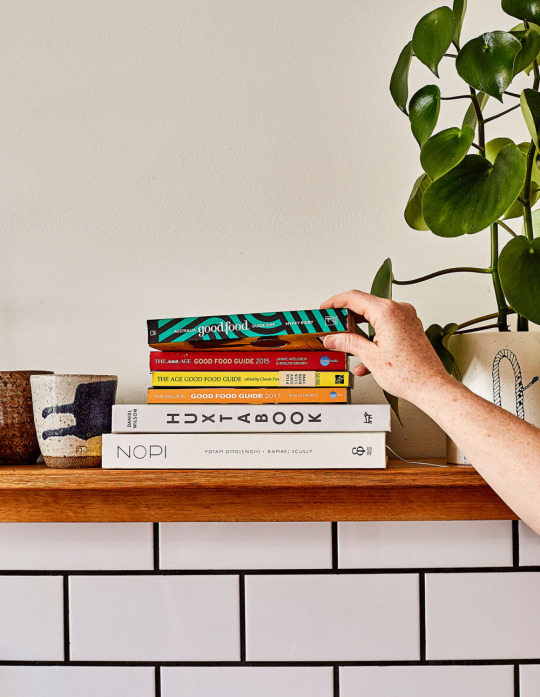
As well as being a critic, Gemima is also a keen home cook. Photo – Amelia Stanwix for The Design Files.

Details in Gemima’s home. Photo – Amelia Stanwix for The Design Files.

Gemima writes the scored Good Food review every week, as well as contributing to their new monthly magazine, website, and the annual Good Food Guide. Photo – Amelia Stanwix for The Design Files.
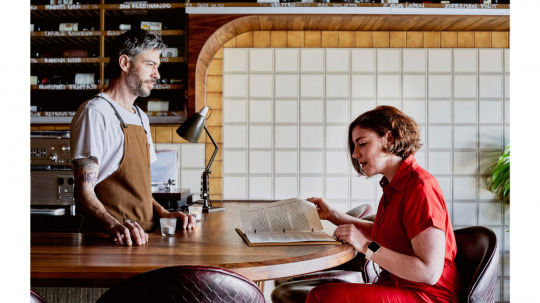
One of her favourite new places is Old Palm Liquor in Brunswick East, where we joined Gemima for a drink! Photo – Amelia Stanwix for The Design Files.
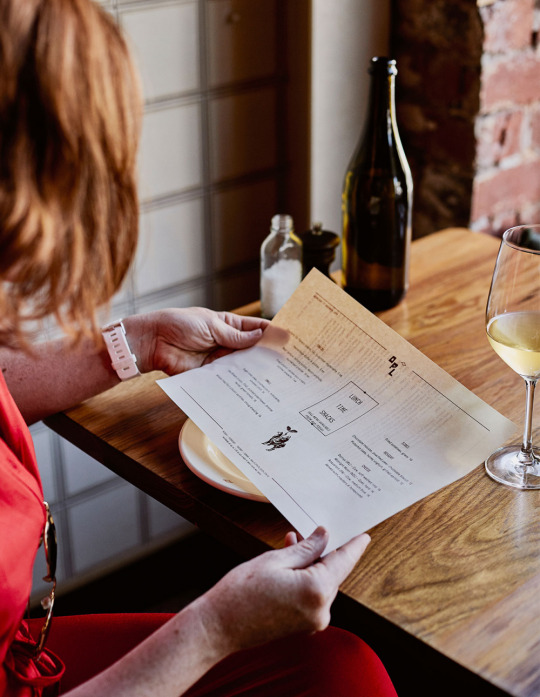
Gemima says, ‘Old Palm Liquor has made me the most excited I’ve been in a long time.’ Photo – Amelia Stanwix for The Design Files.

‘During ‘off season’ I’m eating out two to three times a week, and in the ‘on season’ (February to August) I can be travelling and eating out every single day,’ says Gemima. Photo – Amelia Stanwix for The Design Files.

‘It’s really great work, but it has to be your life,’ says Gemima. Photo – Amelia Stanwix for The Design Files.

Gemima regularly shares snaps of her favourite dishes on Instagram! Photo – Amelia Stanwix for The Design Files.

Old Palm Liquor. Photo – Amelia Stanwix for The Design Files.
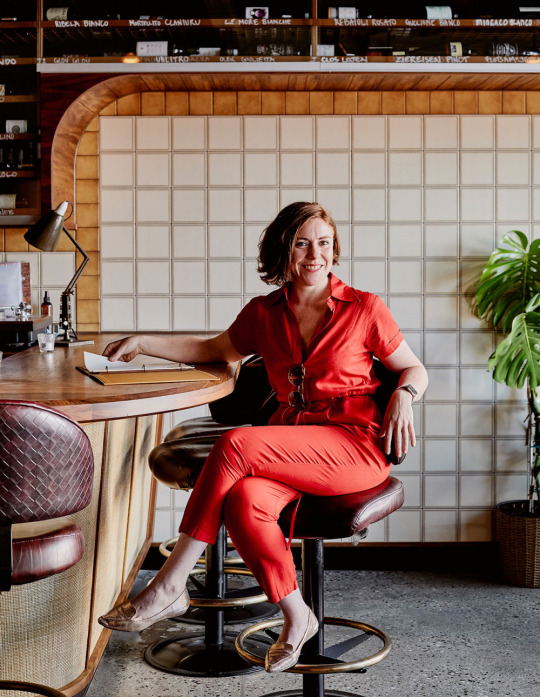
Photo – Amelia Stanwix for The Design Files.
Did you know every restaurant reviewed in The Age’s Good Food section is personally and anonymously visited by one of the team’s critics, and everything consumed is paid for by the publication? That might sound obvious, but in the current media landscape, to hear of a publication investing over $250,000 (!) a year in restaurant bills alone is truly remarkable.
Gemima Cody is The Age’s senior restaurant critic, who writes the scored review every week, as well as contributing to their new monthly magazine, website, and the annual Good Food Guide.
As the child of small business hospitality owners, Gemima does not take her job as a restaurant critic lightly. She knows a review can make or break a business, and brings this empathetic understanding to every restaurant she critiques.
The most important verb in the get-your-dream-job lexicon is…
Perseverance. I feel very uncertain about a lot of things in life, and I’ve had terrible imposter syndrome almost the entire time I’ve done this job, because it’s a position of authority. So, persevering through it, and through a lot of doubt, has been key.
When I grew up I wanted to be…
I grew up in central NSW, about 50 kilometres from Bathurst, where my family runs a holiday business. It’s kind of like Kellerman’s from Dirty Dancing – lots of organised activities for families – but with the Australian bush and horses. I was cooking in the kitchen from when I was 10, and by the time I was 15 my Mum could leave to run errands and I would be completely running the kitchen.
When I was around 11 years old, someone came up to do a review of my parents’ restaurant and I thought then, ‘I’m good at English, and I like food, maybe I could be a food reviewer?’ but I never thought about it again. I went onto study multimedia and law, then worked in television production for a bit, before moving into food writing.
I landed this job by…
I started at The Age in 2014, but before that I was the food and drink editor at Time Out Melbourne. I had a friend who worked for Time Out in Sydney, so she got me involved with doing small reviews in Melbourne, before they officially launched here. I then eventually became one of their two first staff members. I got headhunted by The Age while at Time Out.
A typical day for me involves…
Each week I do the main review for the Good Food section (formerly known as Epicure), and I write all the news pieces. During The Good Food Guide season (also known as ‘eating season’!) we go on the road and visit places all around Australia. During this time, I’ll do an additional 30 to 40 reviews.
There’s a team of 50 critics who write all the reviews for the guide. Every single restaurant of the 500 that end up in the guide, plus the ones we go and review that don’t make it in, gets re-reviewed every single year. It costs well over $250,000 to do just in restaurant bills.
This year I did a good chunk of South Australia, as well as Margaret River. I did 16 restaurants and they were all degustations. Because they were all tasting menus, I ate 168 dishes in 11 days.
During ‘off season’ I’m eating out two to three times a week, and in the ‘on season’ (February to August) I can be travelling and eating out every single day.
In a day I’m doing a review, I get up at 6.30am to try and exercise, get coffee, and go on the internet. I generally work in the office during the day, at The Age’s office next to Southern Cross station. I might come in a tiny bit later than 9am, because I basically won’t get home until 9pm or after, so it’s a really long day. It’s a full day at work, with eating out on top of it. It’s really great work, but it has to be your life.
Occasionally I’ll work from home if I’m just doing writing, because it’s less distracting. I’ll spend those days calling people up, and chasing up leads by whatever means necessary. I’ll be doing phone interviews, booking pictures to go with reviews, and having meetings. Somewhere in between I’ll write some copy, stare blankly at a wall, write some more copy, walk outside, come back inside, hate myself, maybe cry… that’s just me though. I don’t think I’ve got through many reviews without at some point getting so frustrated and going, ‘I don’t know how to do this as a job.’ It’s like I’ve never written a restaurant review before – every single time.
The most rewarding part of my job is…
When I get to discover something that no one’s come across yet, especially when it is a new and young operator who’s doing really well. So, being able to be the first person to give them that recognition and tell that story. It’s not always like that, so it’s nice when it is.
It’s a job where you’re working creatively, but you’re also watching other people doing their form of art, and that’s always inspiring.
On the other hand, the most challenging aspect is…
Living your life in the public. Even though this job is supposed to be anonymous (I will book at restaurants under false names, with a fake email and use friend’s phone numbers) – my photo is still in the paper, and I’ve been doing this for 10 years now, so people are on the lookout. My photo is inside the kitchen at lots of new places along with all the other main critics.
I’ve had to say some not entirely glowing things about restaurants in my time – I don’t take pleasure in it. I think some people don’t like taking criticism from women in particular, and I’ve had campaigns to get me fired. It’s fair when you are in a job that is criticising other people that you then attract that, but I don’t feel that comfortable going out anymore. It’s not that relaxing, and that’s challenging, because I love going out.
The culture of my workplace is…
There’s a community of understanding, because on one hand, this is the absolute best job in the world, but on the other, there are some real challenges to it. Not being able to control what goes in your mouth for most of your life, and the associated health stuff that comes with that, combined with doing creative writing half the time, is hard. But, you can never, ever, say that to anyone who’s not a food writer! No one will ever feel sorry for you, but other food writers get it.
We’re a close team. We’ll sometimes travel together, and we’ll have to bunker down doing all these restaurant reviews in a random town, while staying in the same hotel room.
The best piece of work advice I’ve ever received is…
‘It’s not about you.’ I think it’s really easy to get caught up in your head, and really worried about what people think, but everyone else is focused on their thing. Everyone is actually thinking about themselves, and not what you’re doing, as much as you think they might are.
In the next five years, I’d like to…
I have not had an answer to this for the past 10 years, but I’ve just worked it out in the last week. I really want to do long-form, produced podcasts, while still doing this. I’d like to go really deep on food topics, but things relatable to everyone, like the history of our fast food giants in Australia.
What restaurants are on your radar right now?
Old Palm Liquor has made me the most excited I’ve been in a long time. My other favourite place is Etta, mostly because of the new chef.
Places that are less new but are my favourite are Tipo 00, and a lot of wine bars with female chefs. They just cook in a different way – they genuinely do. There’s a lot more dishes that are driven by the ingredients. I feel like there’s less ego in it.
Do you have any advice to aspiring food writers?
Be quite straightforward and not overly flowery with your language. Keep it short, tight and properly descriptive, and draw parallels between things when people might have a reference point.
We always have a list of banned words each year that is sent out to reviewers, because there was a time that every reviewer was saying ‘the chocolate pudding is sinful’. The chocolate pudding is not sentient!
Is it hard critiquing businesses among Australia’s relatively small hospitality industry?
There are no friendships. There’s a lot of publications that do pieces about openings and that kind of thing, where the restaurant will tell you what they’re trying to achieve – that’s the aspirational view. But when it comes to an actual restaurant critique, you have to go in and analyse how well they’re living up to the bar that they’ve set for themselves. I lose a lot of sleep knowing I’ve got to give a bad review.
I don’t like being harsh on businesses, because in most cases, people are trying. I think people often don’t give enough credit to just how hard it actually is to run a restaurant successfully – it’s so many moving parts – and people just expect that everything is good as a baseline and it’s really not. It’s a lot of work.
How would you hope those in the hospitality industry would describe you?
I would hope they think I’m respectful and fair, because I do respect this industry and the work that people do. I put everything into trying to soften the blows, and make them constructive.
0 notes
Text
LNA Creator Spotlight: Laura Neubert
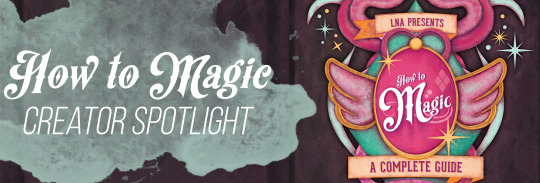
Enjoy our second installment of the LNA Creator Spotlight! This week we’re focused on alumni Laura Neubert!
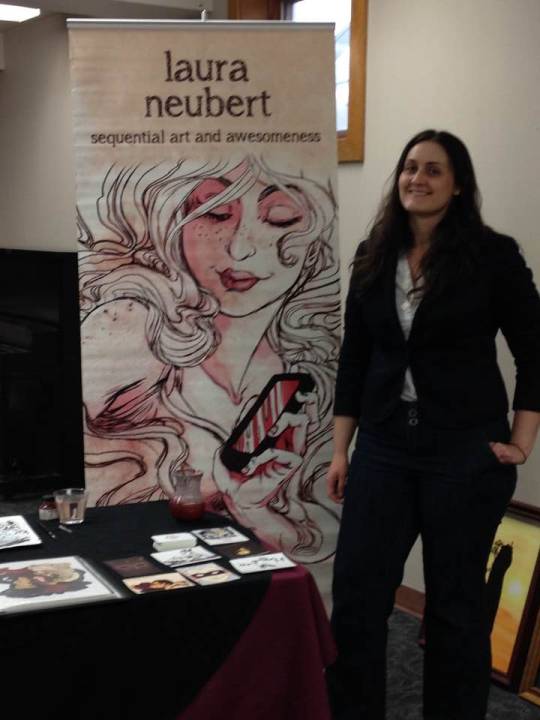
Social Media Info
Twitter - https://twitter.com/MissRosengeist
Instagram - https://www.instagram.com/miss_rosengeist/
Facebook- https://www.facebook.com/laura.neubert.7
Tumblr - https://www.tumblr.com/blog/rosengeist
Portfolio/website - http://rosengeist.daportfolio.com
Credits
Where might we know you from? - Recently, I worked as the
cover artist, and interior pencil artist for the Artful comic
series from Action Lab Entertainment. I have also been
featured in several comic anthologies, including Valor,
Then it was Dark, and Secret Loves of Geek Girls.
Which volume of Ladies Night Anthology did you work on? – I was in
Volume 3 : How to Magic
What’s next for you? – I’m looking to do some work on
personal projects. :)
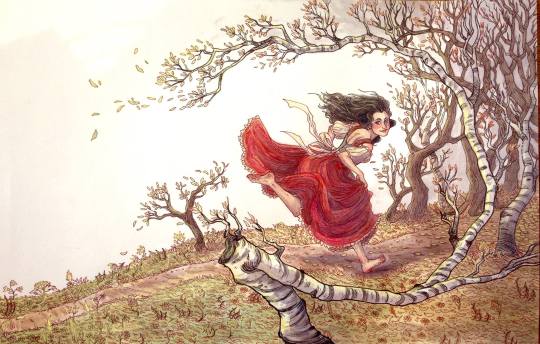
Background
How did you become a comics fan? - I casually always read
comics and manga. As a kid, my parents would get me
Disney comics from the grocery store, and I was secretly
reading Elfquest whenever I was in the library and could
sneak it away to the kids section. In high school and middle
school I had a massive artist crush on Rumiko Takahashi.
When I got into my early 20’s and found Neil Gaiman’s The
Sandman comics, and Marian Churchland’s Beast, I was
sold.
Who are your biggest writing/art influences? – I try to take
influences from areas outside of comics, as well as inside.
As a creative person, I have deep respect and owe a lot to
the influence of the Impressionists (particularly Degas), and
Klimt, as well as authors like Charlotte Bronte and Tanith
Lee. As far as current comics, I dig a lot of the stuff that’s
coming out of web comics, and of course, have a love for
Marian Churchland’s work. I’m also kind of a nerd for
Adrian Alphona’s work, especially in Miss Marvel.
I’d also be remiss if I didn’t acknowledge that at one point I
wanted to be in theater, and also wanted to be an animator,
so Broadway musicals and Disney/Miyazaki/animation in
general are deep pools of inspiration for me.
At the risk of sounding like an ass, I think its best to try and
find inspiration anywhere you can. Why limit yourself to one
medium, or one kind of storytelling outlet. People are
complex, we should honor that.
What is your dream job? There are so many things I still want to do. I’m not sure I can really limit it to one thing. I work in comics, but I’d also
like to write novels, and I’m deeply interested in trying to
learn more about science, medicine, and social work.
I am not entirely sure what my dream job is. The one thing
I’ve learned about dreams is that they constantly are in flux.
As you change, they change. At the moment, I just want to
make cool, engaging things and try to help people around
me better.
What work are you most proud of?
I’m pretty happy with Artful, as it was my first title as a solo
penciller and cover artist.
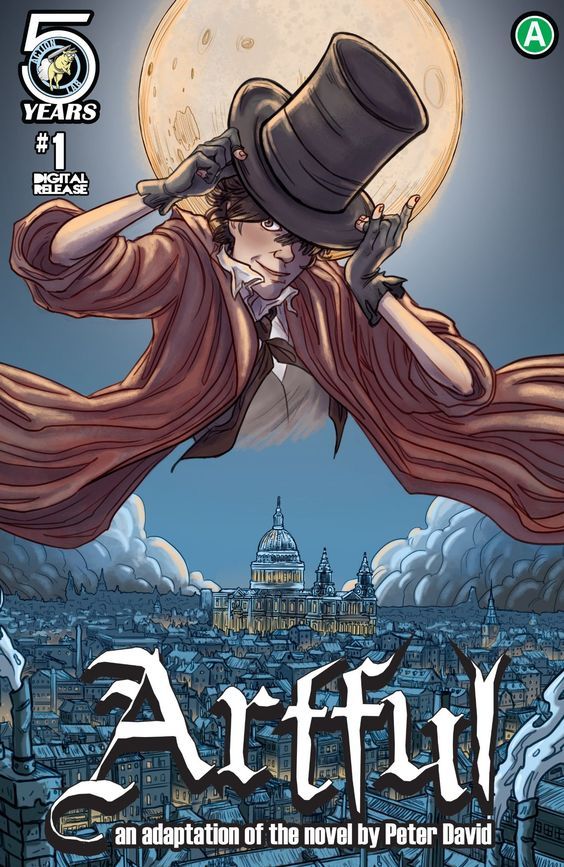
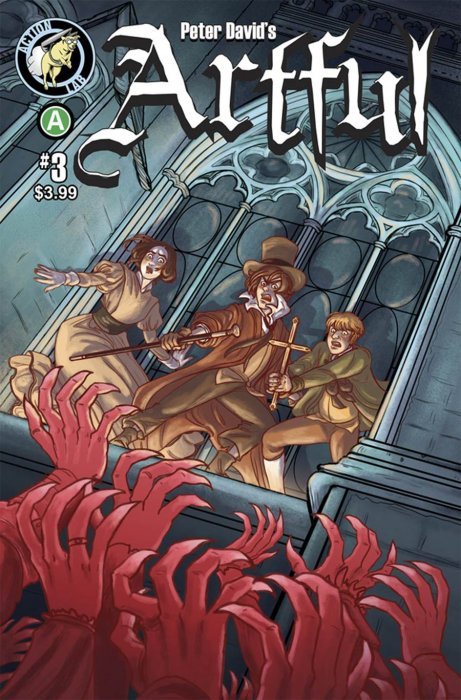
Why do you want to work in comics?
Comics are such an amazing, diverse, low cost, medium. I
feel like that’s as close as you can get to complete control.
Aside from sound, the artist and author is in charge of
everything. It’s a lot of responsibility, and sometimes, it
makes for some awkwardly revealing work, but there is a
sincerity to it that I really enjoy.
I mean, even when you’re getting into something that’s
much more tightly controlled like licensed characters, I
loved that you can still be like “That’s John Romita Sr.’s
Spiderman!” or “That’s totally Humberto Ramos work!”
There is still a lot more of the individual apparent. I kind of
love that it can be so intimate on a small, indie level, but
even when you get to mainstream comics in any genre, you
can see the fingerprints of many different people on it at
different times.
Advice
What helps you get into a creative headspace?
Musicals, a good nights rest, exercise, talking with friends
and novels. The older I get, the more I firmly believe that
creative headspaces are fueled by the world they come
from. No artist can help but be a product of their
environment, so, it helps to have a good environment.
Best critique you’ve ever had?
“Just because you put your heart into it, doesn’t mean
anyone is obligated to like it.” I think a lot of times, because
artists put so much of themselves into their work, we can
feel devastated and defensive when people critique us.
Learning that everyone has a right to dislike your stuff for
any reason, and that it is not a reflection on you as a
person is, I think, a fundamental skill for any creative
person to develop.
Also “Damnit, you’ve been sitting in the chair for 8 hours.
Go, take a break!”
Take breaks…legit. Take care of your body as best you
can.
Best piece of career advice you’ve ever received?
Don’t abuse your body by overworking it. Also, don’t take
on work you aren’t interested in.
What advice would you give to creators just starting out?
Be patient and don’t quit your day job until art pays most
the bills. When you have to depend on something as
unpredictable as art to survive, it can wear you out. By being
patient and allowing your art and reputation to develop over time,
without being dependent on it to survive, you can approach it
much more healthily.
Do you have any specific writing/art tips?
Don’t take inspiration from only one source. If you only
watch anime, read something completely out of left field
like a theoretical non-fiction science book, or watch a
medical drama. Any time you pull inspiration from varied
sources, it gives you a better understanding of what works
in some media and what doesn’t…also, you just get more
interesting ideas that way.
Nothing will ever really feel perfect, and most artists
actually dislike their own work as soon as it’s done. Don’t
seek perfection, perfection takes time, and its subjective.
Seek completion.
How do you relax?
Novels in the bath tub. And cats, and cooking, and delightful
little coffee shops.
Industry
How long have you been working in comics?
This is my 3 rd year working in the industry, going on 4.
Realistically, if I count in school, and hobby comics, I’ve been
trying to sort this out for about 7-8 years now.
Do you have a day job?
Yes and no. Currently I’m a full time artist, but I do tend to
run a lot of errands for people, and I’m interested in
learning new job skills.
Have you seen changes in the industry since you joined?
Yes! I think we’re starting to see more respect for Indie comics,
story telling and style in general, and there is a LOT more room
for small press and indie press to get their work out in the public,
which I love, because that’s what I tend to gravitate towards
anyway.
Favorite convention
I don’t have a fave per se, but I definitely enjoy smaller
cons like Mocca, Vancaf and Dink that lean more towards
small press publishers. That being said, Emerald City
Comic Con, and Geek Girl Con are always a blast for me.
The former for being so insanely massive and having so
much talent, and the latter just because it’s so fun! I love
the environment that convention has been developing.
7 notes
·
View notes